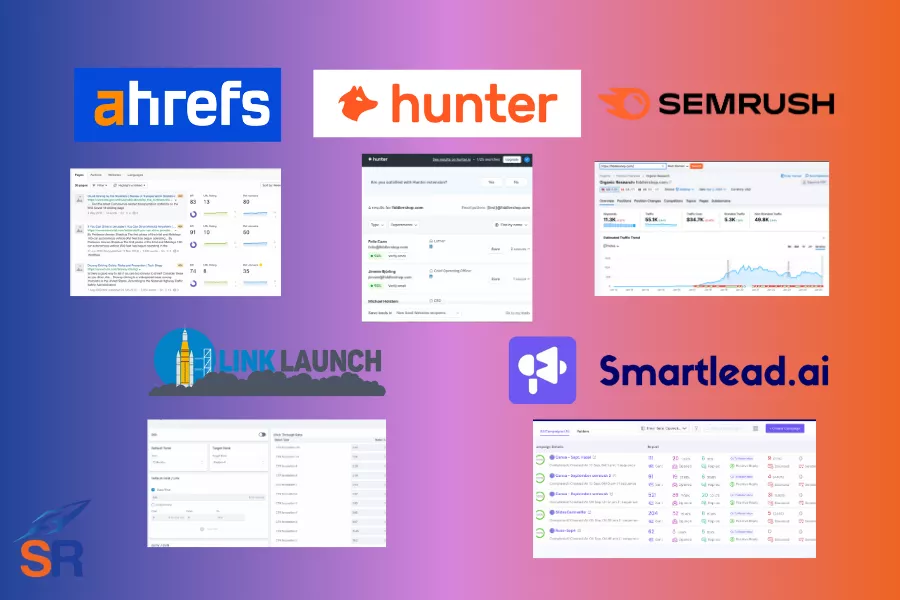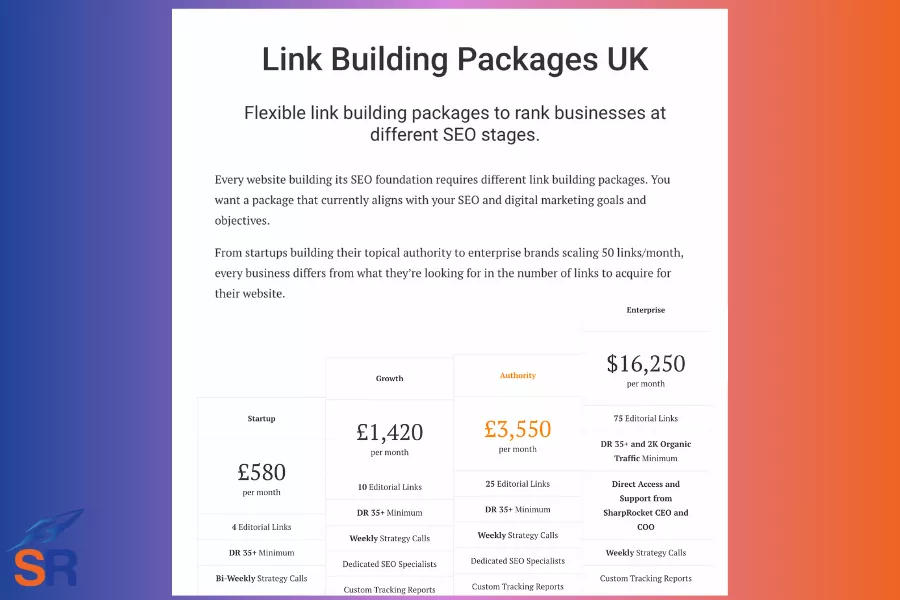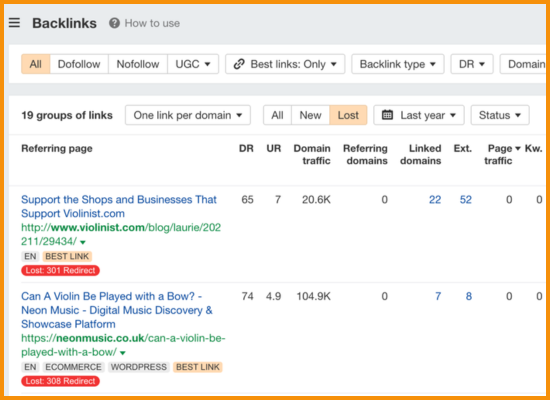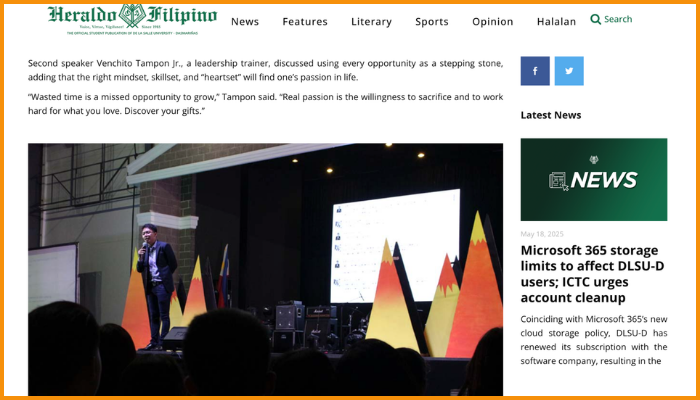The 9 Best SaaS Link Building Services in 2026
SaaS is a continuously growing yet increasingly competitive industry.
Search engine optimization (SEO), one of the top user and revenue growth drivers, has been a channel moving forward to reduce CAC and increase MRR. And in ranking for your head commercial terms, there are definitely other players who've invested in their in-house SEO, strategy, and execution.
SaaS link building isn't as sexy for many SaaS CMOs and Founders, yet it is extremely critical to ranking your software company for high-value commercial and comparative terms. So, being competitive—I must say "competent"—involves learning to hire the right SaaS link building agency.
This guide will review the top 8 SaaS link building services and who they serve best (strengths). We'll also share how to choose the best SaaS link building agency to serve your SEO needs.
1. SharpRocket

Best for: Seed-funded, A+ funded, Public, and Enterprise-level SaaS
Headquartered in: Offices in Manila, Philippines, and London, UK (operating remotely and serving clients globally, including UK)
Strengths: Performance-driven link building with a focus on landing page backlinks to drive immediate rankings and demand generation.
Recognizable SaaS clients: Credible and Shopify
With over 10 years of experience, SharpRocket specializes in high-authority SaaS link building services designed to help landing pages rank for commercial intent keywords — the ultimate objective is to drive demo requests, sign-ups, and MQLs.
Founded by link building consultant Venchito Tampon and Joseph Gojo Cruz, SharpRocket is one of the trusted white-label link-building agencies that delivers backlinks through a stringent process—from niche-relevant prospecting to client approval for backlink prospects and value-driven outreach campaigns.
All campaigns are tailored to the SaaS buyer journey (mostly to BOFU content) and integrated with in-house SEO strategy on keyword clusters, use-case content, and product-led blog creation.
SharpRocket is incredible in its unique way of communicating with internal SaaS SEO teams and startup founders, ensuring alignment between link building and the brand's core growth metrics. Making this SEO integration ensures every link building engagement is worth their investment.
With over 15,000 links delivered to clients since 2013, they've helped notable clients Keypath, ZenBusiness, Credible, and Shopify scale their in-house link building needs and grow search traffic and organic revenue.
Just check out their client reviews and explore their link building services.
2. USerp
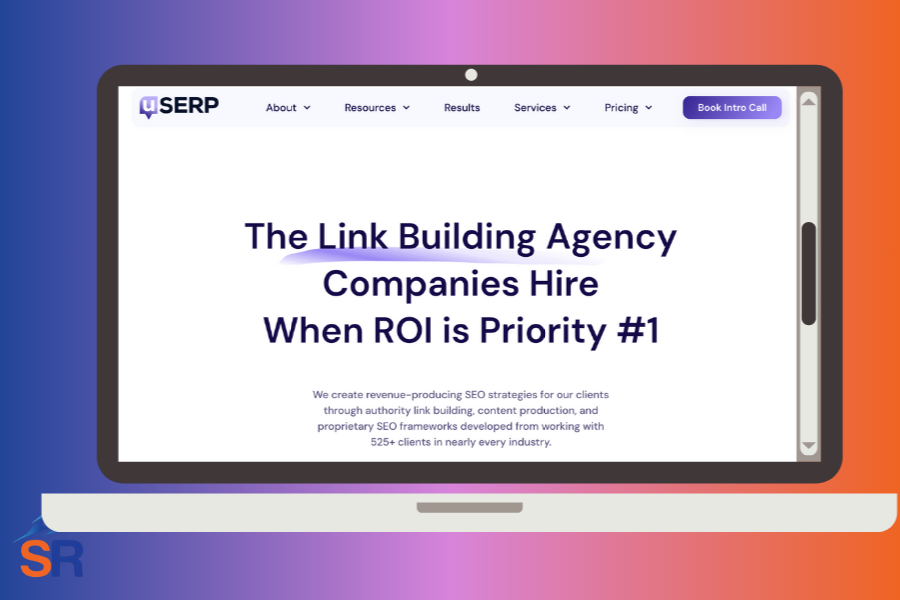
Best for: Any SaaS company from Series A to IPO
Headquartered in: Lone Tree, Colorado, USA (serving global clients)
Strengths: Authority link placements, KPI-aligned SEO strategies, and content-first outreach
Recognizable SaaS clients: Monday.com, Active Campaign, Freshworks, and Reply
uSERP specializes in high-authority PR and is strongly concerned with ongoing KPI evaluation and adjustment with clients. Through content-led outreach, their links appear in top-tier publications.
3. Powered by Search

Best for: B2B SaaS
Headquartered in: Toronto, Canada (operates globally)
Strengths: ICP-driven link building
Recognizable SaaS clients: Fortra, Basecamp, Elastic
After Powered by Search joined forces with Growth Gorilla (who specialize heavily in SaaS link building campaigns), they became one of the link building powerhouses we have today, with most of their clients loving their strategic perspective and outreach-based link campaigns.
4. Siege Media
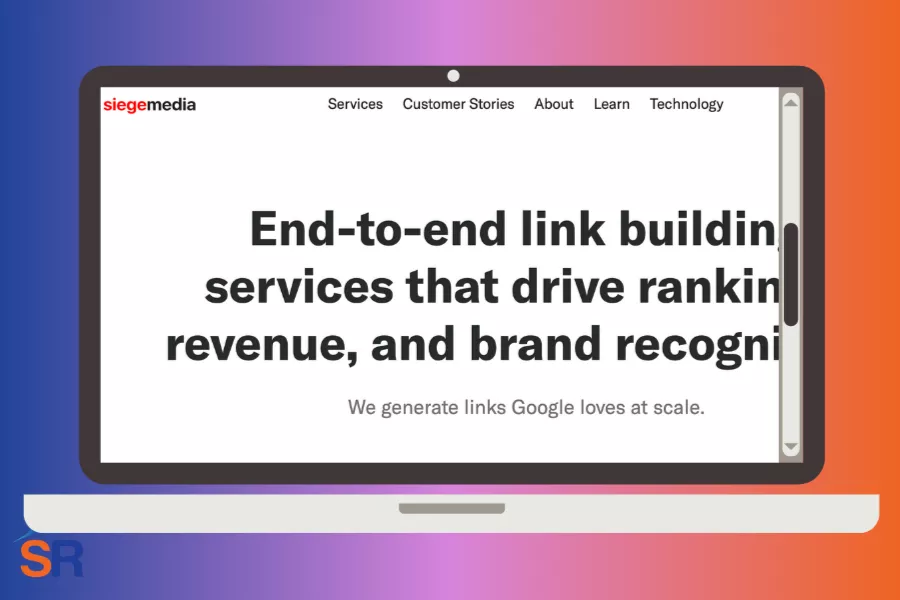
Best for: High-growth startups, and Enterprise SaaS
Headquartered in: Austin, Texas, USA
Strengths: Passive link acquisition through solid linkable assets
Recognizable SaaS clients: Zoom, Zapier, Zendesk
Siege Media blends link acquisition with modern-day content marketing, creating data-driven assets that naturally earn links from authoritative publications, industry journalists, and content creators.
5. SimpleTiger
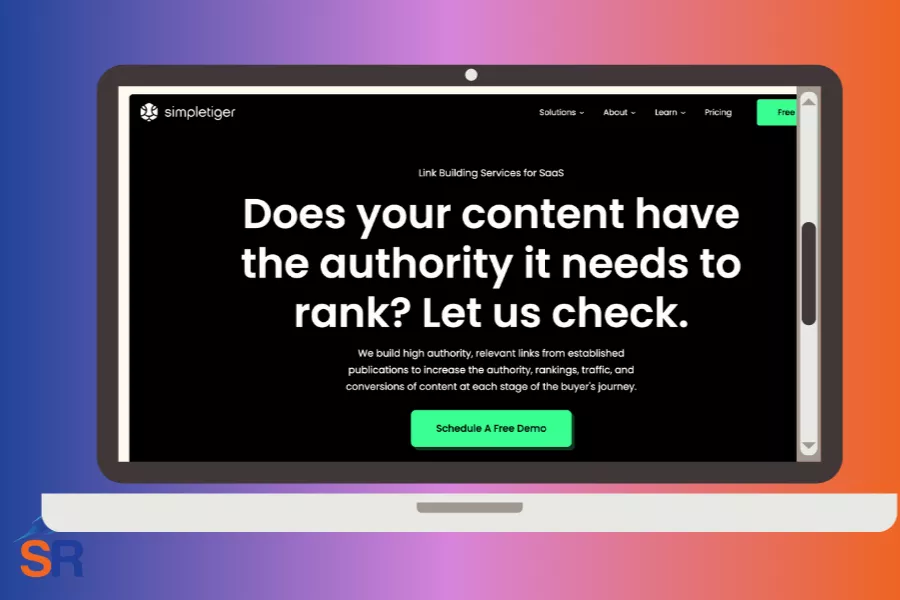
Best for: SaaS startups, lean teams, and founder-led software companies
Headquartered in: Sarasota, Florida, USA
Strengths: Streamlined SaaS SEO, lean content + links approach, and fast execution for early-stage growth
Recognizable SaaS clients: JotForm, Segment, Bitly, Gelato
SimpleTiger offers tactical high-authority link building and digital PR campaigns with data-backed strategy—best for SaaS brands that need fast results without bloated retainers. Its focus on clarity, keyword alignment, and manually built outreach makes it ideal for startups scaling their SEO up to IPO, and it is a good contender for SharpRocket, the best SaaS link building agency.
6. Skale

Best for: VC-backed SaaS companies
Headquartered in: Fully remote (London, England)
Strengths: Product-led link building and SEO strategy
Recognizable SaaS clients: Test Gorilla, Maze, and Piktochart
Skale delivers link building with a focus on measurable outcomes like demo signups and SQLs, not just rankings. They're known for producing SaaS SEO playbooks that combine link acquisition, technical audits, and performance reporting as a holistic SEO framework.
7. Dofollow
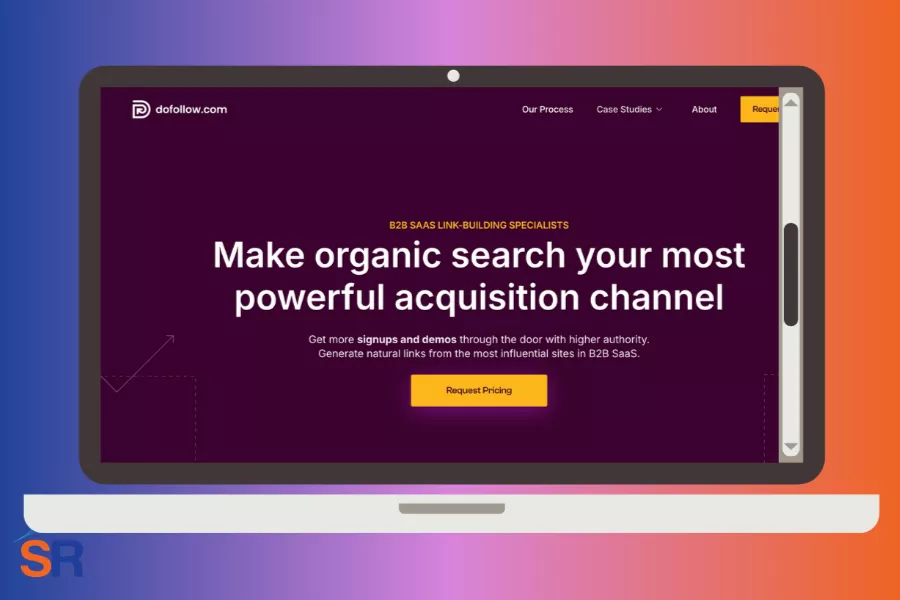
Best for: B2B SaaS
Headquartered in: Wilmington, Delaware, USA (remote team)
Strengths: Relationship-based link building
Recognizable SaaS clients: Pitch, LegalZoom, Vonage
As strange as their brand name is—getting what actual link-building agencies must acquire—Dofollow delivers clean, personalized outreach for link building. From audit and strategy to constant iteration of link-building campaigns, they're a strong choice for B2B SaaS companies.
8. Digital Olympus
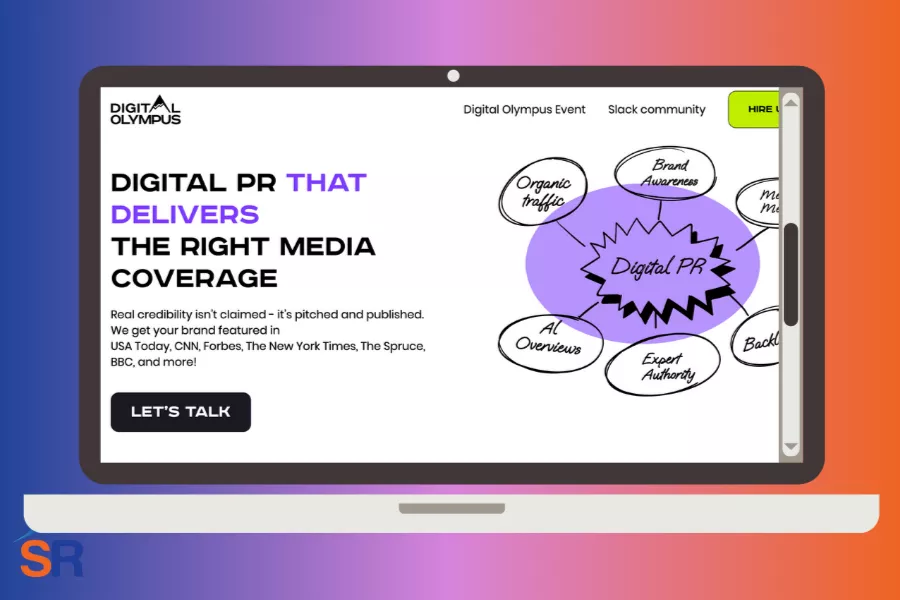
Best for: Mid-to-enterprise SaaS companies prioritizing digital PR
Headquartered in: Wilmington, Delaware (remote global team)
Strengths: Digital PR for SaaS
Recognizable SaaS clients: Ramp, Credo, Ramp
Digital Olympus specializes in digital PR campaigns for SaaS brands, helping them get featured on major publications and niche-relevant authoritative websites like USA Today, BBC, CNN, and The New York Times.
Their authentic relationship link building approach to digital PR makes blending this marketing discipline and SEO a strong flavor to the mix for SaaS companies.
9. Minuttia
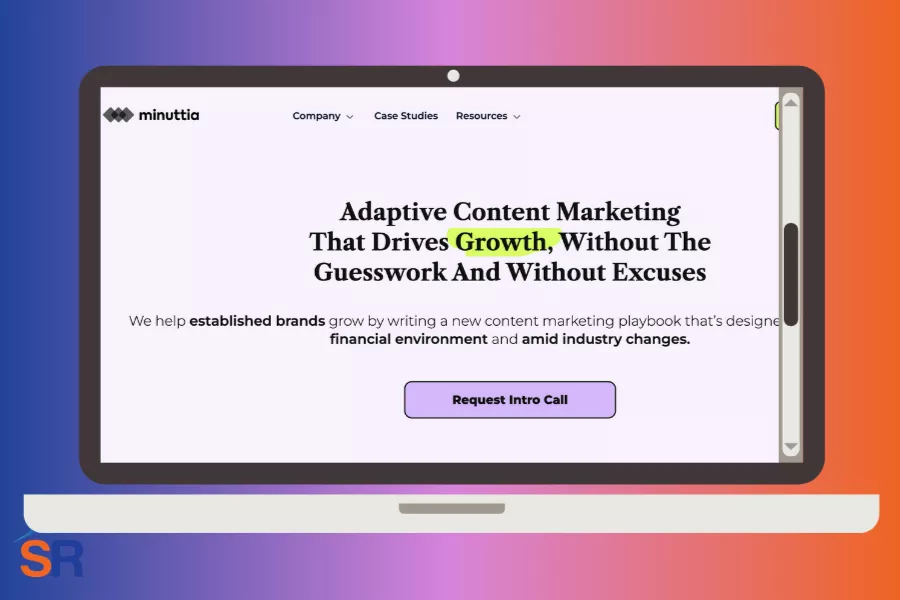
Best for: Enterprise B2B SaaS
Headquartered in: Tallinn, Estonia
Strengths: Content-driven link acquisition
Recognizable SaaS clients: NordVPN, Toggl, Service Titan
Minnuttia combines data-backed content strategy with link building to help SaaS brands adapt to ever-changing search markets. Utilizing their content operations and deep keyword mapping makes them a good choice for scaling B2B software visibility.
How to Choose The Best SaaS Link Building Services?
Vetting a SaaS link building agency involves researching, reviewing, and considering standards beyond surface-level considerations. Ultimately, you want a partner who understands SaaS sales cycles, product-led growth, technical buyers, and how a SaaS link building campaign can help improve target pages' rankings and drive visibility and pipeline—this makes SEO investment worthwhile.
Below are actionable tips to help you evaluate SaaS link building agencies before signing a contract.
Check if they understand SaaS buyer intent.
The best SaaS link-building agencies truly understand buyer intent at different stages of the SaaS funnel, as this is where they align the types of backlinks they acquire for their SaaS clients.
Nowadays, you'll find many of these agencies that point their backlinks to TOFU pages, trying to rank for informational queries. These generally have higher search volume as users are looking and researching about their problems ("problem-aware"), but the intent isn't to sign up for any online software.
Pro Tip: Consider SaaS link building agencies that prioritize getting backlinks to MOFU and BOFU pages to rank for lower search volume, but high conversion intent queries, as the qualified traffic here actually converts into users.
Read reviews on G2, Clutch, and Capterra
Reading verified reviews from clients gives you real insights into their experiences, helping filter serious, client-proven agencies who deliver from those that only look good on their websites.
Most SaaS users and potential customers consider web-based products and trust G2 and Capterra to compare software. And they are also helpful for checking B2B service providers—SEO and link-building agencies.
Through the platforms, you can look for client reviews of the agency mentioning results for SaaS clients, including increased demo signups, improved keyword rankings, and topically relevant backlinks within the client's vertical.
Those review platforms are also suitable for seeing reviews about the agency's communication and transparency—how agencies update their clients on the campaign's progress, and whether they are flexible for any valid change in the actual SEO strategy.
Additionally, you want to see red flags from actual client reviews—repeated issues like missed deadlines, recycled backlink placements, vague reporting, or any not-value-for-money comments.
Ask for SaaS-specific link samples.
Get the types of links that matter to your SaaS. Many agencies will brag about their links coming from high-DR blogs, but many of these links are either irrelevant or don't have any organic traffic, all worthless links, if you may.
It is best to truly assess their credibility by asking for backlink samples—the best agencies will provide them when you inquire about their services or share them exactly during your initial meeting with their SEO strategists.
Without link samples, ignore agencies that fluff their way to getting you as their clients.
With SaaS-specific link examples, look for the following:
- Contextual placements - a standard should be for many links - be strict to only getting backlinks within the page's content.
- Types of pages where links will come from - will they secure links from product-led content (e.g., How X solves Y articles, "Top X tools for [Use Case]", "Best Alternatives to [Competitors]"). The referring source matters as it dictates the topical relevance of the link and how much branding and link equity power you can obtain from the referring domain.
The types of links an agency acquires determine the real value of its work.
Confirm KPIs and Reporting Cadence
Clear metrics are what you need to measure the success and value of every link you'll pay for.
Ask SaaS link-building agencies about what they report, how often they report, and what results they track—they will send you these as part of monthly reports.
Request for regular updates—it could be monthly reports showing live links and placements, bi-weekly updates for approval, and possibly live dashboards (or just a spreadsheet) for real-time tracking. These are all different for every agency and depend significantly on how they do their link building operations.
Pro Tip: Find SaaS link building agencies that allow you to approve the list of sites before outreach. You want to ensure all links match specific criteria (niche relevance, quality metrics) and maintain control over where your brand appears (or which domains your brand associates with).
Remember that once links are placed, they can't be undone unless the agency requests link removal or a change of target page.
Test With a Short Pilot
This has become a standard initial effort from SaaS companies when outsourcing link building agencies, as they want to test the waters before seriously investing big budgets on links.
Based on my 12 years in the SEO industry, I noticed the most underlying reasons why SaaS companies prefer to do a trial run (usually 2 to 3 months of work) when hiring link building agencies - here are some of the reasons:
- Two to three months is a viable time to see the type and impact of their links to the website (assuming you've built the necessary SEO foundation- technical SEO, on-page SEO, etc, so you can maximize the value of every inbound link).
- Early assessment of transparency, communication, and professionalism within the first months - how they handle updates, how frequently their link-building reports are, and how quickly they respond to questions.
- Check if the agency truly understands the SaaS's target users, product, and brand positioning, and if all the links they will build truly align with their brand's ICP.
In essence, a trustworthy SaaS link-building agency doesn't need a 6-month lock-in to prove value. A short pilot run of a link-building plan will show the agency's effectiveness with its process and actual deliverables, determining whether your SaaS is confident in its ability to scale up the volume of backlinks.
FUQs (Frequently Unasked Questions)
There are a lot of questions that are often overlooked but are essential for SaaS companies to know when investing in link building. Here are some frequently unasked questions about SaaS link building services:
Do backlinks help reduce CAC in SaaS?
Yes. Backlinks help improve a website's organic rankings, driving free, long-term traffic to your product pages and blog content. This lowers your reliance on paid ads and actually reduces your cost per acquisition (CAC) over time.
What kind of backlinks help PLG models?
Backlinks that point to and pass link equity to use-case pages, onboarding tutorials, or integration guides can support product-led growth (PLG). Those mentioned pages attract users who are already searching for solutions and are more likely to push them straight into the product experience.
Can backlinks help my SaaS get listed on G2 or Capterra rankings?
Indirectly, yes. Higher organic traffic from backlinks can help drive more user sign-ups and reviews. And with more verified users, your chances of being listed or ranked higher on G2 and Capterra will improve.
How do backlinks support product-led SEO?
In many ways, but in particular, backlinks help the site's topical authority around the product's core use cases. And when it ranks for queries related to features or integrations, you attract users from search who are more likely to activate and engage with the product.
Best Link Building Tools For SEO [2026 Honest Review]
As considered to be the UK’s best link building agency, the most common question we’ve been asked is what are the best link building tools for SEO we use to scale our campaigns.
In this 2026 review, we’re sharing our full list.
These are the tools we rely on daily legwork to find quality link prospects, manage outreach, track results, test new link building strategies, and improve results across our clients’ link building campaigns.
For a quick look, here’s our top pick for each key task:
Best Tool for Competitor Link Research, BackLink Analysis, and Link Prospecting: Ahrefs
Ahrefs is our top choice for getting deep insights into your competitors’ backlinks. With their tool features like Site Explorer, Link Intersect, and Content Explorer, you can find highly relevant, authoritative sites linking to others in your industry and quickly build a list of targets. It’s a good starting point for high-impact prospecting and scalable link building campaigns.
Best Tool for Finding Emails: Hunter.io
Once you have a solid list of link targets, Hunter.io helps you find accurate email addresses linked to each domain. Whether you’re searching by domain or by name and company, Hunter makes email discovery quick and reliable. It also verifies email deliverability to reduce bounce rates in email outreach campaigns.
Best Tool for Email Outreach: SmartLead
SmartLead lets you send personalized cold emails at scale. With unlimited inbox rotation and a unified inbox for all replies, it keeps your outreach organized and effective. It’s built for link building teams that care about deliverability, automation, and landing high-quality link placements.
7 Best Link Building Tools For SEO (Our Top Picks)
Below are some of the best link building tools for SEO that we personally hand-picked:
1. Ahrefs (starts at $129/mo)
Ahrefs is our top-picked link building tool as an agency, considering it is highly useful for a wide range of tasks in link building.
It offers one of the industry’s largest and most updated backlink databases. It assists in most of the tedious tasks of prospecting and analyzing the types of backlinks of competitors and other relevant sites.
Let me walk you through some of the tasks we use it for:
Competitor Backlink Research
Feature: Site Explorer
One of the best ways to start your link building campaign is to look at where your competitors have acquired their backlinks, especially those currently ranking for your target keywords. It shows you where these links come from and helps you generate ideas on what specific link building strategies have proven to work and which ones you can replicate for your campaign.
Ahres helps you conduct thorough competitor backlink research. The Site Explorer feature shows you all the backlinks pointing to any domain, URL, or subdomain. Whether you want to reverse the entire domain’s links data or a specific page/content, you’ll have it assembled with Site Explorer.
The best part of Ahrefs is its ability to filter backlinks based on your desired link metrics. And if you’re a UK newbie link builder, you can choose the “Best Filters” so it would do the filtering for you on websites that are do-follow, in-content, DR30+, 500+ organic traffic, and less than 200 external links on a page – it’s the default setting, but you can customize it to fit your needs.
For any link building campaigns we start, I filter sites based on DR and traffic alone (DR30+ and organic traffic of 500+). With that quick analysis, I can decide if exporting the list, analyzing it further, and reaching out to the same link prospects is worthwhile.
I dig deeper into some links for advanced link building strategies by filtering them based on link type, destination page, or number of referring domains. For instance, if I want to see listicles (for SaaS link building), I’ll filter links from external links (7 to 30).
Another example is filtering sites to homepage links to find branded mentions (with links) or valuable links through digital PR campaigns (which mostly link to brands’ homepages).
Discover Link-Worthy Content Topics
Feature: Content Explorer
Creating linkable assets starts with assessing which topics are link-worthy. This means that when you start publishing and do a little bit of outreach, you’ll have chances of earning backlinks from target publishers.
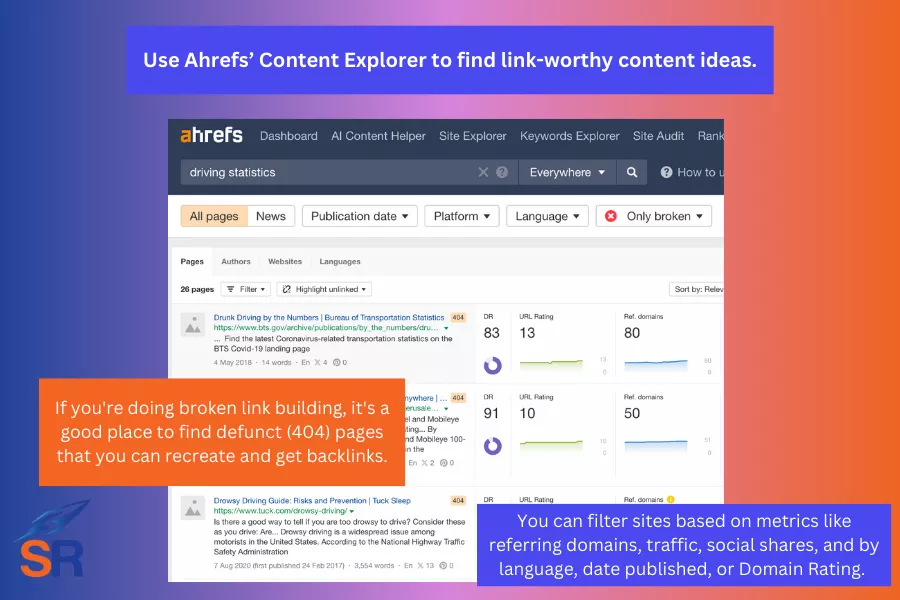
With Ahrefs’ Content Explorer, you can search for any keyword and see pages that earn the most links. You can filter sites based on metrics like referring domains, traffic, social shares, and by language, date published, or Domain Rating.
For example, if you want to search for industry-related topics, you can search for “statistics” and “topic” and filter them by referring to domains (>50), English language, and publication dates from the past year.
If you’re doing broken link building, it’s a good place to find defunct (404) pages that you can recreate and get backlinks by either reaching out to publishers who linked to the dead page or finding new links pages that are topically relevant to your republished content.
Find Link Prospects That Haven’t Linked To You
Feature: Link Intersect
When Ahrefs launched this feature years ago, I was one of the first SEO specialists to try it, and I knew it would be one of the best features of Ahrefs. Rightfully, it did so, as Link Intersect allows you to compare your site to competitors and shows domains that link to them but not to you. Other SEO tools haven’t replicated this invaluable feature at the time of this writing.
This task alone, doing link intersect, cuts prospecting time in half (even 70%) by pointing you to sites that are clearly open to linking to similar content or businesses. If pages link to 2 to 3 of your highly relevant competitors, they would also link to you, assuming you have a similar or better value proposition in your email outreach.
Reclaim Broken Links and Lost Opportunities
Feature: Broken Link Checker
Link decay happens when one of your links is broken. Either the hosted page removes your link, or it is removed by error or by purpose. This is often the case with many of the websites that are earning links.
Besides actively pursuing links every month, it’s a good practice to look at your site’s broken links and see which ones you can recover. Given that you’ve tried to get those broken links in the past, it would be worthwhile to retrieve them with a quick nudge in your emails.
Track Your Backlinks
Feature: Backlink Alerts
There are a handful of free alert tools, like Google Alerts, but if you purchase Ahrefs, take advantage of its Alerts feature.
You can set up email alerts for new or lost backlinks to any domain. Ahrefs notifies you as links appear or disappear, keeping your campaigns updated in real-time. So, you can either follow up with lost backlinks to reclaim them (as I mentioned earlier) or replicate the strategy that allows you to earn new passive links (without doing any manual outreach).
SharpRocket’s Take on Ahrefs:
As a link building agency in the industry for over a decade, we’ve used Ahrefs for every possible task related to link acquisition. It is a powerhouse SEO suite as it also assists in SEO audits and keyword research, making it cost-efficient for agencies to have it in their SEO arsenal.
The only caveat is its starting price. For the UK’s newbie SEO professionals or starting SEO agencies, $127/mo may be too steep, especially if you’re still building your client base or working with limited budgets.
It’s smart to start with lighter tools or use Google extensively for link prospecting or other free link building tools that cover the basics of using Ahrefs. Once you begin scaling and need deeper backlink insights or faster and more streamlined processes, investing in Ahrefs becomes a more justifiable and high-impact investment.
2. Hunter.io (Free + starts at $34/mo)
Discovering and vetting relevant and high-quality link prospects is only half the job. The other half is finding a way to contact them. There are many email finder tools (and we’ve tested most of them), but we couldn’t find one that is of maximum use with Hunter.io.
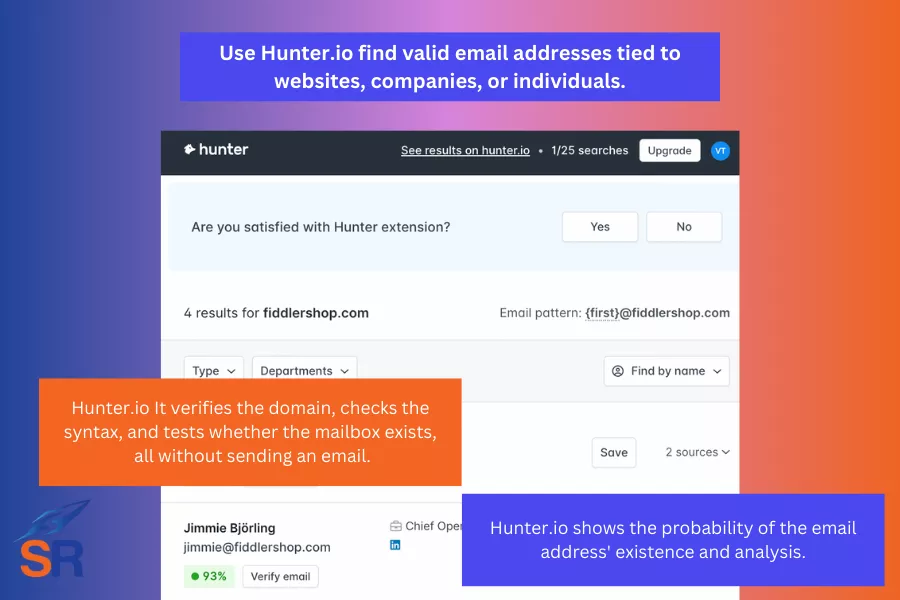
The best use of Hunter is that it helps you find valid email addresses tied to websites, companies, or individuals. Instead of manually searching for the contact person’s email using Google or X search, you can click on the Hunter Chrome extension, which instantly gives you the available corporate emails.
The accuracy of finding emails for outreach is essential in ensuring you get positive responses in email, compared to randomly emailing non-corporate emails (which leaves you with no chance of responses).
Hunter is the best choice for targeted link building that caters to editors and specific departments of companies. It includes names, job titles, and departments, providing you with ready access to decision-makers and editors without wasting hours of time.
Another overlooked feature of Hunter is that it checks for deliverability in real-time. It verifies the domain, checks the syntax, and tests whether the mailbox exists, all without sending an email.
Email verification is crucial to reducing bounce rates, avoiding spam folders, and protecting your domain’s sender score (though most link building agencies use a domain similar to their clients’ domain for outreach to avoid flagging the real brand domain’s sender score).
If you’re a little nerdy, Hunter shows the probability of the email address’s existence, which gives you the confidence that it is the actual email of the person you want to reach out to.
SharpRocket’s Take on Hunter:
If you’re doing a handful of link building campaigns, Hunter is ideal for solo SEO specialists or early-stage SEO agencies to streamline their process for finding email contacts (which, in our experience, consumes most of the link building efforts).
Its paid pricing of $34/mo saves you hours of manually searching for the right email address, which you can instead spend on major link-building tasks.
3. Journo (starts at $49/mo)
If you’re monitoring digital PR campaigns and want to launch one for your website or for an agency client, you need tools to facilitate strategies such as expert commentaries, data-driven PR, and reactive PR.
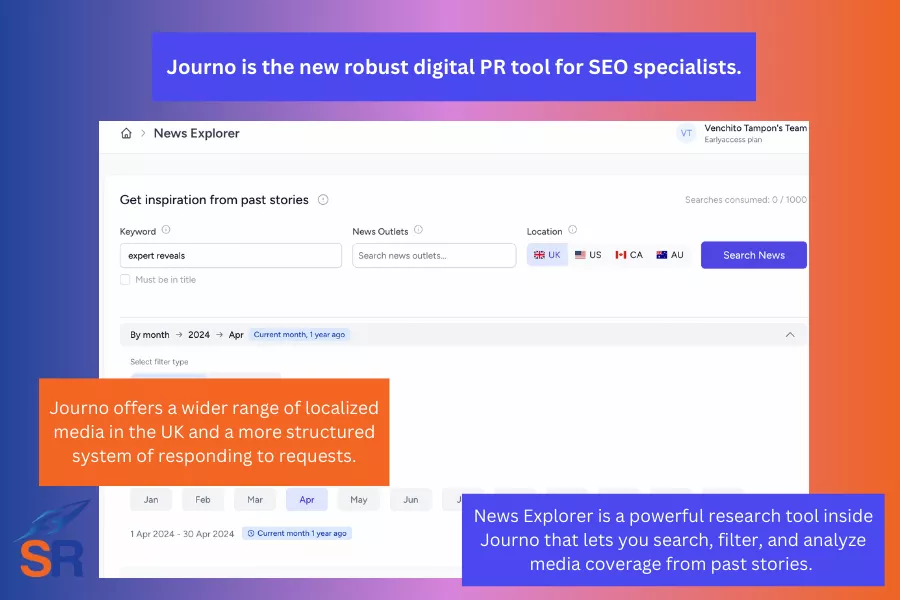
After HARO’s shutdown, many PR professionals and SEO specialists have been looking for reliable alternatives to help them offer real media connections.
Fortunately, we have Fery Kazsoni of Search Intelligence, who’s in the nitty-gritty of digital PR and recently launched his digital PR platform, Journo.
Unlike HARO, which is heavily US-centric focus, Journo offers a wider range of localized media in the UK and a more structured system of responding to requests. It doesn’t overwhelm users with irrelevant queries but delivers targeted opportunities that align with your industry and expertise, making it easier to land quality brand mentions that come with earned backlinks.
Get Featured by Responding to Media Requests
Feature: Quote Responses
Journo gives you real-time access to journalist requests, which is the best use of the tool. These journalists seek expert inputs, brand examples, case studies, or quotes for specific stories.
It puts your business in front of journalists who are actively writing instead of contacting them firsthand without brand recall. Using Journo activates the discovery mode of journalists, which increases the chance your pitch gets noticed and positive responses.
Start by creating a client campaign and correspondents. These team members or client representatives will receive and respond to journalist queries. You could create a profile on behalf of an expert or be an industry expert.
Set up a profile with complete company details, position, description, and social media profiles. Make sure you have these filled out properly, as this is where journalists would likely base their decision on which correspondent to choose from, based on your expert inputs.
Once your profile is set up, you can proceed to Quote Responses.
What I like about Journo is that it filters responses based on the following:
- Industry or topic
- Status (pending, responded, urgent) – helps you prioritize the most urgent quote requests.
- Set bookmarks either with labels of topics or the client’s name (i.e., tags)
These neat features help you organize your media requests, unlike HARO, where you can only categorize media requests using labels in Gmail.
Journo makes it easy for any SEO specialist or digital PR expert to respond to media requests using their clients’ respondents’ profiles. They know that the majority of users of their tools will be SEO, digital PR, and digital marketing agencies, so they make sure that responding to media requests is as seamless as possible.
They also have a feature where you can dictate your answer (using your microphone), so if it’s not you would be responding, you can hand an expert from your team to dictate their answer (without them writing their inputs from scratch). You’ll then edit their answer and send it instantly through the Journo platform.
Ask for Expert Insights to Add Credibility or Find Relevant Angles
Feature: Request Expert Quotes
This feature of Journo works in reverse: you submit a request for expert input. So, for instance, if you’re writing a blog post, guide, or content piece and want to add quotes from real practitioners in your industry, you can use the tool to invite experts to contribute their insights.
Doing so helps you solidify your content assets with experience and expertise (E-E-A-T SEO approach), crafting more helpful content for your target audience.
Instead of soliciting expert inputs on X, LinkedIn, Reddit, and other platforms, you go straight to real experts hungry to give their contributions on Journo.
Generate Content Ideas for Digital PR Campaigns
Feature: News Explorer
News Explorer is a powerful research tool inside Journo that lets you search, filter, and analyze media coverage from past stories. The best part of this feature is its pre-determined keywords, which are exact titles and content ideas patterned after stories that Search Intelligence has encountered with its hundreds of digital PR campaigns.
For example, “expert reveals” or “survey reveals” makes it easier for digital PR or SEO newbies to find data-based or breaking news instantly without rigorously finding them on Google News or other news-related search platforms.
Journo’s News Explorer also has other interesting features that make it savvy for data campaigns:
- By country – filter results by UK, US, CA, and AU.
- By data published – filter results by date published by year, month, or week.
- By news outlets – filter results by specific news outlets in the UK, US, or Global News (e.g., The Sun, The Verge, or Bloomberg).
This level of control helps you refocus your research and focus only on the stories that match your campaign goals.
For example, if you’re planning a digital PR campaign targeted at the UK market, you can filter stories published in UK outlets in the past months and search for keywords like “survey shows” or “study finds.” This reveals which data-led stories gained traction recently, inspiring your pitch’s next content and direction.
You can also sort by “must be entitled” to find only stories where your keyword appears in the headlines. This is useful when studying what types of hooks catch editorial attention.
SharpRocket’s Take on Journo:
Journo is an incredible tool for anyone in the digital PR space. It helps with the ideation and content creation process. Like any other tool, leveraging it for optimal success requires executing and aligning actions with campaign goals.
The real value comes when you dig deeper into the research phase and turn the ideas you generate using Journo into link-worthy digital PR pieces that actually reflect your current media interest.
4. Link Launch (Free)
One of the biggest challenges in SEO is proving the real impact of link building. LinkLaunch helps you justify the value of every single link-building investment. It combines traffic potential, cost modeling, and ROI forecasting in one dashboard, giving in-house SEOs and agencies the data they need to get more buy-ins from stakeholders (for in-house SEOs) and increase link building budgets with clients (for agencies).
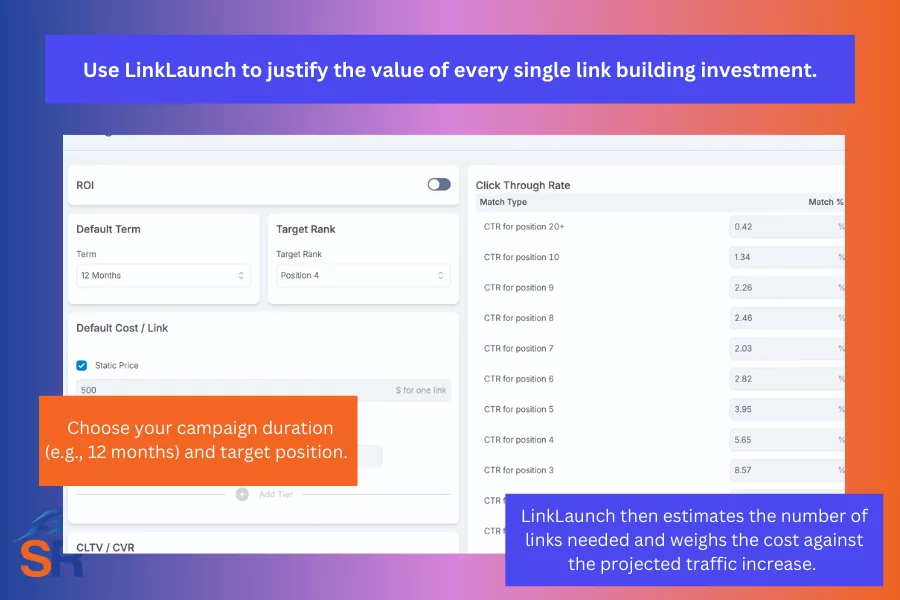
You can use LinkLaunch’s Click-Through Rate (CTR) Model to forecast potential traffic gains. It already has default CTR data by search position. From here, you can set a realistic ranking goal (e.g., position 4). LinkLaunch calculates how much traffic each position could deliver for your keyword.
Then, tie it all together with the cost per link and ROI by setting a fixed cost per link (e.g., $250) or using custom pricing tiers. Choose your campaign durations (e.g., 12 months) and target position. LinkLaunch then estimates the number of links needed and weighs the cost against the projected traffic increase.
SharpRocket’s Take on Link Launch:
Link Launch is incredibly useful to justify your link building investment or ask for increasing budgets to target more competitive keywords or sustain rankings. I recommend this for anyone doing SEO client work for agencies and enterprise SEO specialists who find it difficult to get approvals and buy-ins from stakeholders and defend links with data.
5. SmartLead (Free + starts at $39/mo)
There are many feature-rich and more popular outreach tools, such as Buzzstream and Pitchbox, which I personally tried and found to be highly useful for agencies and in-house SEO teams. Buzzstream is one of the simplest outreach tools, and Pitchbox is for scalable enterprise link-building campaigns with hundreds to thousands of link prospects.
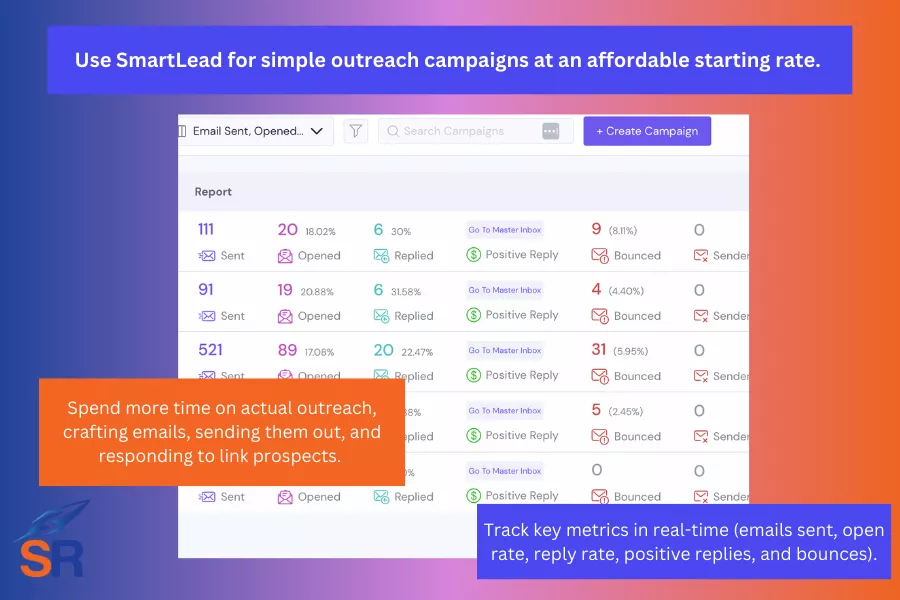
Among all these best outreach tools, our top pick is SmartLead, given its affordable pricing. It starts at $39/month for 6,000 emails per month, compared to Buzzstream’s $24/month price for 1,000 contacts. SmartLead makes it feasible for anyone starting outreach campaigns or just having 1 to 4 small-scale link building campaigns.
Rather than figuring out how the outreach tool works, the easy interface of SmartLead allows us to spend more time on actual outreach, crafting emails, sending them out, and responding to link prospects.
Given that it can track key metrics in real-time (emails sent, open rate, reply rate, positive replies, and bounces), we can assess the results of each outreach campaign, even run an A/B test to see which performs well and refine the campaign as we see fit.
6. SEMRush (starts at $139.95/mo)
If you’re only paying SEMRush for link building tasks, it’s not worth it, given that its immense value comes from non-link-building tasks such as competitive intelligence, keyword research, site audits, and content gap analysis.
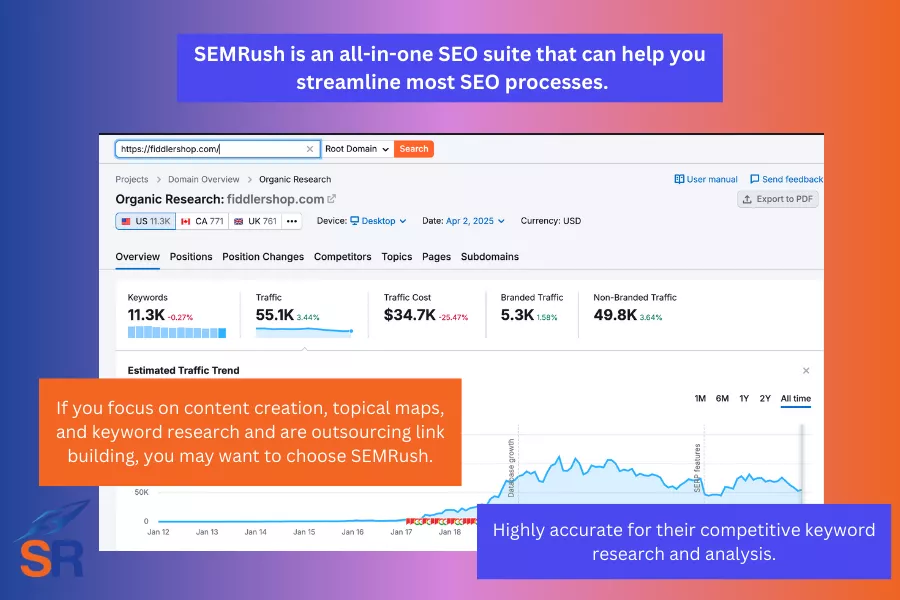
However, SEMRush is an all-in-one SEO suite that can help you streamline some of your processes, particularly in generating keyword ideas using actual data from your site, competitors, and other winning websites.
SharpRocket’s Take on Link Impact:
If most of your SEO work involves link building, consider Ahrefs. If you focus on content creation, topical maps, and keyword research and are outsourcing link building, you may want to choose SEMRush, as it is highly accurate for this competitive keyword research and analysis.
7. Grammarly (Free + $12/mo)
Grammarly is actually a writing assistant, but it has helped us improve grammar, clarity, tone, and originality. While those things can easily be achieved with basic communication skills, for link building and SEO specialists, Grammarly helps ensure you’re creating the highest-quality content possible, whether for writing guest articles, outreach emails, or internal content assets (guides, linkable assets).
Beyond its ability to assist in creating polished linkable assets, it helps to avoid duplicate content in guest posts by scanning them against billions of online sources to detect unintentional plagiarism.
Grammarly has been highly useful for outreach specialists in detecting the right tone, recommending softer or more direct alternatives, and tightening up long-winded sentences or awkward phrasing that could harm our outreach pitches.
SharpRocket’s Take on Link Impact:
Grammarly isn’t a direct link building tool, but it supports the vital process of content-led link-building campaigns: content ideation and editing. For teams producing content at scale, it adds a layer of quality control without slowing them down.
Which Tool Fits Your SEO Strategy?
The right tool depends on your campaign goals, team size, and, of course, budget. Below are helpful questions to help you decide what to use based on your specific SEO needs.
What Budget Do You Have to Work With?
If your budget is tight, free options like manual Google searches for link prospecting and limited versions of tools like Hunter.io can help you get started. These are best when you’re still learning the ropes or handling outreach in small volumes.
But once you’re scaling, investing in paid tools becomes necessary. So, tools like Smartlead, Buzzstream, or Pitchbox (for large enterprise link-building campaigns) can help automate outreach and follow-ups (saving hours of manual work).
For backlink analysis, investing in premium link intelligence tools like Ahrefs, MajesticSEO, or SEMRush is best to provide you with deeper data and better accuracy.
The bottom line is that if you’re serious about link building and want real results, it’s worth allocating part of your SEO budget to tools that increase speed, accuracy, and outreach success.
Are You Working Solo or with a Team?
You don’t need full team features if you’re a freelance or solo SEO specialist tasked with link building. You can use spreadsheets to help you organize your link prospects and outreach campaigns, which can take you far.
However, if you’re working with a team, whether for an agency or with multiple websites as an in-house SEO specialist, then collaborative tools become essential. Link building tools like Pitchbox and Buzzstream let you assign roles, manage conversations, and track multiple campaigns under one account, helping you avoid duplicated effort, inefficiencies it may, and missed follow-ups.
How Much Link Data Do You Need?
Not all backlink analysis tools offer the same depth. If you need detailed, thorough competitor backlink profiles and link intersect features, stick to major link intelligence tools like Ahrefs.
Cheaper tools may look appealing but often come with smaller link databases or outdated indexes, which can lead you to miss high-potential link opportunities.
Do You Need to Report Results?
Clean reporting matters when working with clients, stakeholders, or internal teams. It shows them that clarity matters. So, tools like Ahrefs, SEMRush, SmartLead, and Pitchbox offer built-in reports with visual summaries, link status updates, and campaign metrics.
If you spend hours building reports manually, switch tools with auto-reporting features (of course, you’ll make filtering with the exported data only show what matters).
See our link building services if you need help facilitating these link-building tools. We’ll do all the legwork for you. Book your strategy call.
The 5 UK's Best Link Building Services in 2026 [Honest Review]
Link building services can be a huge asset to your brand’s overall SEO campaign.
With an agency specializing in link building, you can reap the benefits of pushing your webpages higher in Google SERPs, build your brand authority, and make your offer (products/services) a go-to solution in your industry.
In this guide, I’ll explore the five best link building agencies and provide tips for finding the UK’s best link building services for your business.
1. SharpRocket
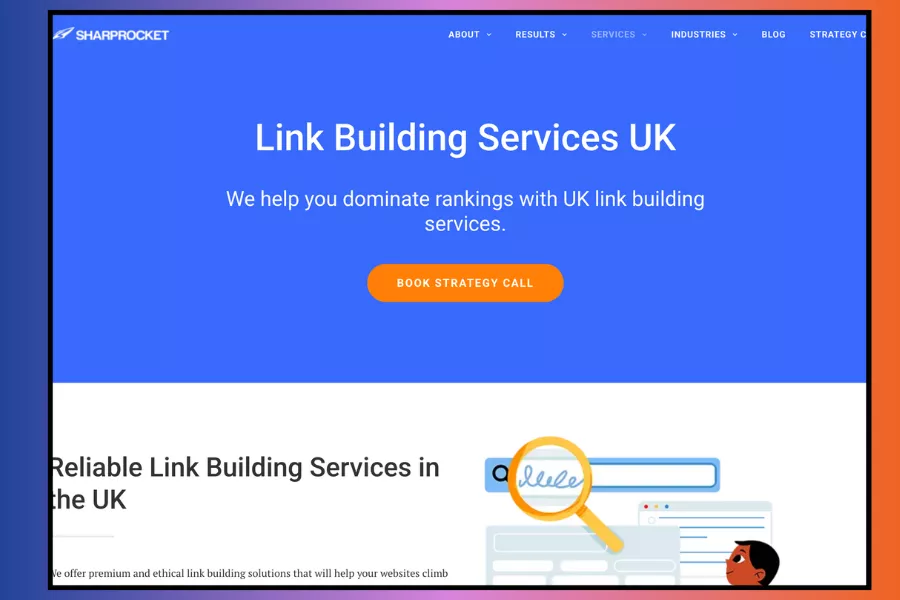
Best for: Agencies, SaaS, eCommerce, and Enterprise Brands
Headquartered in: 100% remote, with headquarters in Manila, Philippines (serving UK clients)
Industries: e-commerce, B2C, B2B, and SaaS
Strengths: Keyword-driven content to drive rankings, increase passive links, and improve organic traffic
Recognizable clients: Credible, Shopify, and Eatigo
With over 10 years of experience, SharpRocket is the leader in acquiring backlinks that will help landing pages rank for their individual commercial keywords and drive organic traffic to the business.
Our global link building agency is known for its high-quality, white-hat backlinks, which help brands increase their organic search presence. Their manual vetting and outreach process ensures that all acquired links come from authoritative, industry-relevant websites. This makes them a trusted partner for businesses looking to scale their SEO through link building.
SharpRocket focuses on content-driven link acquisition, a method for helping brands earn natural, high-quality links through niche edits, guest posts, digital PR, and resource page link building. Their emphasis on customized outreach campaigns builds trust with clients, as each link placed aligns with strict link metrics and the client’s SEO goals.
With enterprise link building at our core, our link building services drive rankings, revenue, and brand recognition. We’re proven to deliver, with over 15,000+ links and our 10+ years of experience for clients like Keypath, Zenbusines, and Fiddlershop— just check out our client case studies to see for yourself.
2. Search Intelligence
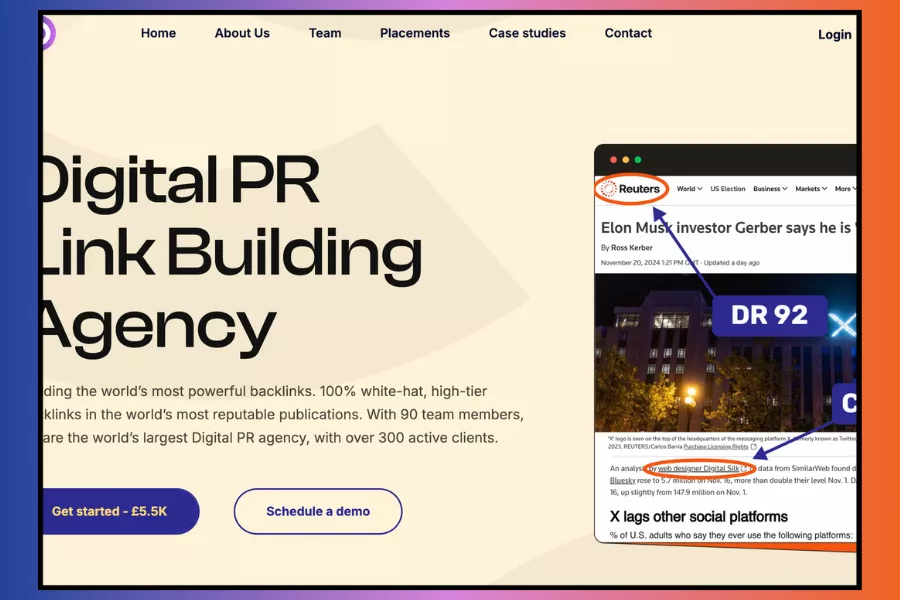
Best for: In-house Teams
Headquartered in: Oxfordshire, England
Industries: Finance, SaaS, Tech, and Legal
Strengths: Reactive PR, Data-driven Campaign, Expert Commentary
Recognizable clients: Ahrefs, Bulk, VPNOverview
Search Intelligence is a leading digital PR and link building agency that specializes in earning high-authority backlinks from top-tier publications through data-driven PR campaigns. Their expertise lies in crafting newsworthy content that attracts organic media coverage, securing backlinks from sites like BBC, Forbes, The Guardian, and The Independent.
Search Intelligence’s proven digital PR strategies make them a top choice for brands seeking high-authority, scalable link building solutions that drive both SEO growth and brand visibility. Their focus on data-backed storytelling ensures that clients gain credible, organic media placements that significantly impact search rankings.
3. Bulldog Digital Media

Best for: eCommerce
Headquartered in: London, UK
Industries: Retail and eCommerce
Strengths: Press release creation, Targeted PR outreach, and Journalist request for monitoring
Recognizable clients: La Redoute, Funky Pigeon, Carpetright
Bulldog Digital Media offers a unique, risk-free digital PR service with a pay-per-placement pricing model, ensuring clients only pay when placements go live. Clients set their monthly budget, and Bulldog’s dedicated team executes PR strategies without upfront fees. Their flexible approach allows clients to adjust budgets as needed.
The agency’s process includes monthly brainstorming sessions to develop PR story ideas, crafting press releases, monitoring expert comment opportunities, and building relationships with journalists and bloggers. This strategy has led to features in over 300 publications in the last year, enhancing brand visibility and authority.
Their commitment to transparency, flexibility, and results-driven strategies makes Bulldog Digital Media a trusted partner for brands aiming to enhance their digital presence through strategic PR initiatives.
4. UK Linkology
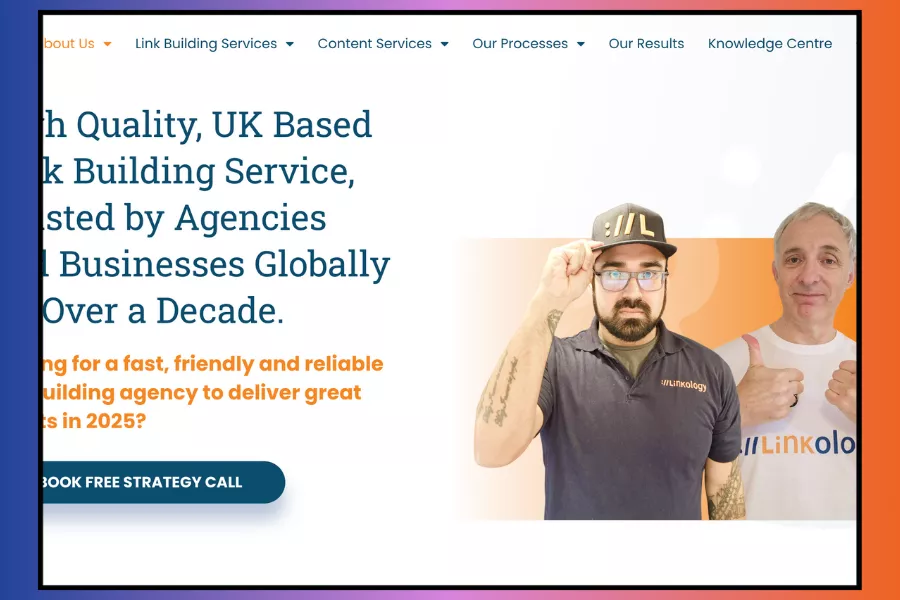
Best for: Local and brick-and-mortar businesses
Headquartered in: Derby, UK
Industries: Various sectors, including gambling and iGaming
Strengths: M-Flux V2 site assessment, extensive publisher database and gambling link building capability
Recognizable clients: N/A
UK Linkology is a UK-based link building agency specializing in delivering high-quality, contextually relevant backlinks to enhance website authority and search engine rankings. Their proprietary M-Flux V2 formula assesses websites using five SEO metrics and a 33-point manual site check, ensuring that only reputable sites are selected for link placements.
The agency boasts a vetted publisher database of over 61,000 sites, built since 2010, allowing them to cater to both English-speaking and international markets. They offer various services, including custom link building, white-label solutions for agencies, international link building, and specialized services for industries like gambling and iGaming.
5. Click Intelligence
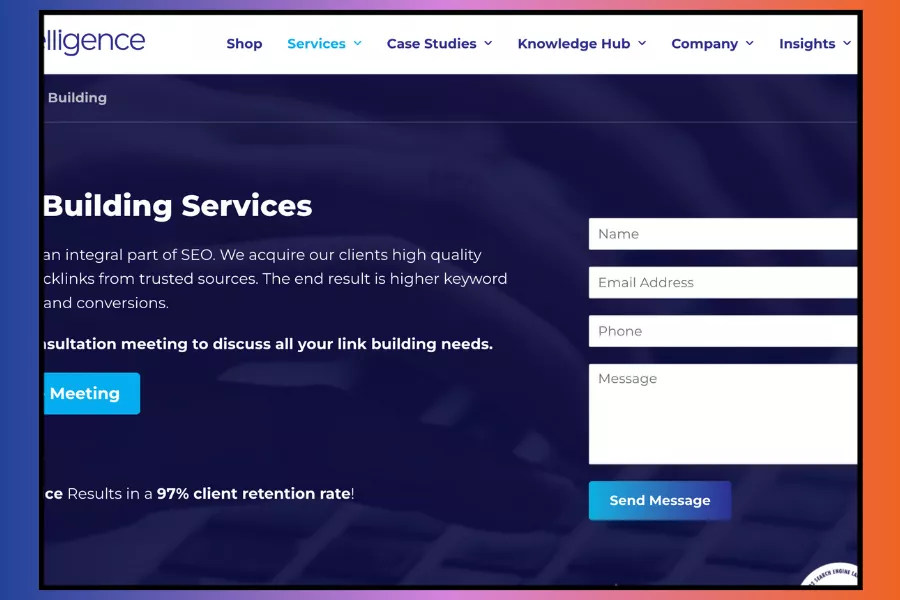
Best for: Digital marketing and SEO agencies
Headquartered in: London, UK
Industries: SaaS, iGaming, Travel
Strengths: White label solutions
Recognizable clients: eBay, AX Paris, Gumtree, Holiday Inn
Click Intelligence also provides specialized link building services tailored to specific industries. Their iGaming Link Building strategy is designed for the competitive gambling sector, improving search visibility and driving business growth.
They also excel in resource link building, positioning clients as industry experts by securing backlinks from existing listicles through targeted campaigns.
Tips for Finding the UK’s Best Link Building Services
Interested in implementing a link building strategy but not sure where to start? Read more for tips on finding the best link building agencies and services.
Prioritize Agencies with a Proven Track Record
Look for agencies with a history of delivering high-quality backlinks for clients. Check their performance in case studies, online reviews, and industry reputation.
A reliable link building agency should be transparent about its strategies and provide you with examples of its successful link placements. By looking at their live links from disclosed clients, you can easily assess if they are worth investing in.
Avoid agencies that promise quick results or use black hat techniques, as these can lead to penalties. Always verify the credibility of their past work before committing.
For example, SharpRocket has been delivering thousands of quality links to clients since 2015. Its decade worth of experience and expertise can attest to the results it provided for past and current clients. Their proof of work with Shopify, Fiddlershop, and many other esteemed clients tells you how prolific they are in enterprise-level and eCommerce link building campaigns.
Evaluate Their Link Building Strategies
Not all link building strategies deliver long-term results. Some agencies use link placement shortcuts that only harm rankings instead of improving them.
The best agencies focus on tried-and-true, white-hat techniques, such as guest posting, link insertions, digital PR, and product-led link building. These techniques require manual outreach to secure placements on relevant and trusted sites rather than relying on automated link schemes.
You should also look for agencies that provide detailed reports outlining link sources and the quality of acquired backlinks (based on agreed-upon metrics).
Assess Industry Experience and Specialization
Some agencies specialize in specific industries, such as finance, SaaS, legal, or e-commerce, while others offer generalized services. If you operate on one vertical with one or multiple businesses, you can look for an agency that is already familiar with your niche so you can get more relevant and impactful backlinks.
Different industries have nuances in markets and methods, so having an agency with deep expertise in your market can help you gain more advantages for your link acquisition campaigns.
From a content marketing perspective, it could help you develop more targeted content that aligns with your audience, given that there’s a higher level of familiarity with the market and the audience the agency is writing for.
Verify the Quality of Their Link Sources
You should consider agencies that can secure links from relevant, editorially controlled sites with strong domain authority (Ahrefs’ DR) and organic traffic.
These contextual backlinks pass more value than other types of links. Avoid agencies that place links on low-quality directories, private blog networks (PBNs), or spammy sites.
Look for Transparent Reporting and Communication
The best link building services provide clear, detailed reports showing their built links, along with metrics such as Ahrefs DR, organic traffic (data from SEMRush traffic), and anchor text usage.
With them providing you with regular updates, you can keep track of campaign progress and effectiveness, helping you decide whether to ramp up more links to achieve better results or dedicate other links to your other businesses.
Avoid agencies that fail to disclose their link sources or use vague reporting methods.
You could glimpse the agency’s willingness to serve through your initial interaction after you submit an inquiry through their contact forms. The best link building agencies are responsive to inquiries and ones that provide realistic timelines and set clear expectations.
Consider Pricing and Value for Money
Pricing varies significantly among link building agencies, depending on link quality, strategy, and industry demand. Link building comes with investment, so make an allowance in your budget when seeking the right fit for your link building needs.
Be wary of cheap services that offer bulk link packages. These often use low-quality sites or automated tactics.
On the other hand, expensive services should justify their costs with premium placements and overall legwork (or inclusions) in their services. Request a breakdown of costs to ensure you’re getting real value for your investment.
By following these guidelines, you can identify a reputable UK link building service that supports the sustainable growth of your SEO team (either you’re an in-house SEO or agency).
FAQs
You may be thinking a lot about finding the right link building provider right now, so here are some frequently asked questions about link building services.
What Do Link Building Agencies Do?
Link building services help businesses improve their search engine rankings by getting more relevant, quality backlinks. These services use various strategies to build organic, contextual links that enhance a website’s authority and credibility in Google’s search results.
They execute campaigns and strategies to improve the site’s crawl rate, search potential in rankings, and potential assisted conversions through:
- Manual outreach – Securing backlinks through personalized communication with website owners and publishers.
- Guest posting – Publishing high-quality distributed content on authoritative websites with embedded backlinks.
- Digital PR – Earning links through media outreach, data-driven campaigns, and newsworthy content.
- Niche edits – Placing contextual links within existing high-authority content.
- Resource link building – Getting links from resource pages that reference useful industry content.
Why Is Link Building Important?
Link building is a crucial aspect of SEO strategy, as search engines use and highly consider backlinks as a ranking factor. High-quality backlinks signal trust and authority, leading to better organic rankings and increased website traffic. Effective link building can also:
- Strengthen brand visibility and industry credibility.
- Drive referral traffic from authoritative sources.
- Improve search rankings and domain authority over time.
- Support long-term organic growth without relying solely on paid ads.
What Is the Average Cost of Link Building Services?
The cost of link building varies based on factors like link quality, outreach strategy, and industry competitiveness. Pricing typically falls within these ranges:
- Blogger outreach campaigns – $250–$1,000 per link
- Digital PR link building – $5,000–$15,000 per month
- Guest posting services – $100–$700 per post, depending on site authority
- White-label link building – Custom pricing for agencies outsourcing services
At SharpRocket, link building services are tailored to deliver topically-relevant, high-quality backlinks to move the websites’ most important pages higher on Google’s SERPs. Their pricing is structured to ensure that clients receive guaranteed, authoritative, niche-relevant links that drive real SEO value.
Fuel SEO Growth with Link Building
There are many link building agencies and services to choose from, but it’s up to you and your team to find the one that best fits your brand’s SEO goals and objectives. At SharpRocket, our team of link building specialists and strategists can get high-quality backlinks that fit several needs— we have almost 15,000+ backlinks secured that generated traffic revenue for our clients to actually prove it.
Looking to take your SEO to the next level with link building efforts? Check out our link building services and get a free link building roadmap.
Ecommerce Link Building: Actionable and Proven Tactics for 2026
In 2026, you’ll see the savviest SEOs moving into eCommerce, where there is less competition and higher returns. Those particular about handling affiliate and display-ad sites now diversify their efforts into eCommerce, as it offers better opportunities.
On top of this scenario, the demand for SEOs will significantly increase, given that traditional businesses continuously shift and/or add operations to their online shops.
Marketers who take advantage of this profiting market should master the basics and learn new ones to excel and dominate the competition.
The fundamentals of SEO have remained the same for years (and will continue to be so for years to come): sound technical SEO, logic-based site architecture, data-driven UX, and strategic backlink placements.
The latter - links matter more today. With AI content flooding search, links become a fundamental and most reliable signal of quality and authority, especially in eCommerce, where tons of business owners churn out AI content in their product descriptions and blog content, hoping for a sudden spike in organic traffic - which in reality, only stagnate their growth.
In this guide, I’ll show you how to build strong, relevant, and high-performing backlinks to your eCommerce that have only proven to work. Some of these are scalable and can even be tested in various industries and/or types of businesses (other than eCommerce).
Let’s get started.
Backlink Factors to Consider in eCommerce Link Building
Before diving straight into prospecting and outreach campaigns, here are the high-level considerations for starting any eCommerce link building campaign.
1. Relevance
Google values backlinks from domains that share topical relevance with your site. For instance, an eCommerce store selling outdoor gear should get backlinks from sites or blogs focused on outdoor activities, gear reviews, or travel.
Topical relevance extends even to the page's specific content—we call this “page-to-page relevance”. So, in our earlier example, getting links from a page discussing hiking gear is significantly more valuable than getting links from a general lifestyle blog (if all things are equal, of course).
2. Trust and Authority
You want to get a link from a site that Google and users trust and consider authoritative. Link metrics, such as Majestic’s Trust Flow and Ahrefs’ Domain Rating and Page Rating, can measure this.
Majestics, for example, handpicked seed sites and manually reviewed them to ensure they were legitimately reputable. This is a starting point for assessing a link's trustworthiness. Fundamentally, these sites only link to truly deserving pages, making it hard for anyone to manipulate the ratings for this metric.
So, acquiring from a link on a site that’s being linked to by any of the seed sites of Majestic tends to have higher Trust Foow, which is genuinely worth your time if you’re pursuing links.
On another note, you can use Ahref’s Domain Rating, which measures a domain from a scale of 1 to 100 based on the quality and number of unique referring domains the site acquires in a given time.
One tip is to assess whether the page you’re getting links to receives internal links from other pages within the website. A well-linked page boosts the value and authority of your backlink.
3. Anchor Texts
Anchor text influences how search engines interpret the relevance of your backlinks. Overdoing it on one end (let’s say getting 100% exact match anchor texts on links could lead you to some penalties) or being too conservative (just having 5% exact match) boils down to your risk tolerance.
I recommend getting an idea of what your competitors are currently doing regarding their link profiles. Analyze your competitors’ anchor text profiles to understand the ideal distribution.
For instance, in our link building agency, a healthy mix for our clients’ link profiles looks like 50% branded, 15% exact match, and 35% partial match. We optimize our strategy based on what we’ve seen on their competitors’ link profiles - not fully imitating as some of our competitors could be doing something wrong - the earlier mix is one to consider in our experience.
So, diversifying anchor texts goes like this:
- Exact match: Your target keyword (e.g., "best electric violin")
- Partial match: A variation of your target keyword (e.g., "top-rated electric violin for beginners")
- Branded match: Your brand name (e.g., "FiddlerShop")
Topping it all, you want to also pay attention to words before and after the anchor texts used for links to maintain a natural context. This is where you see the sentiment types and language, whether or not it is going in your favor (if it’s giving a positive sentiment about your brand).
Overall, focus on creating a balanced and natural-looking profile, using exact match anchors sparingly.
4. Link Placements
The placement of a backlink significantly impacts its value.
Links positioned higher on the page hold greater weight than links in the footer or sidebar. So, for example, a link in the first paragraph of a blog post receives more engagement and link value than one buried at the bottom.
If a page has several external links, aim to get the first link rather than the third or fourth external links.
Context matters as well. A link surrounded by relevant and high-quality content holds more weight than a standalone link on a low-value page (brings back to the relevance factor mentioned earlier).
Aim for link placements that naturally integrate with the surrounding text. If you’re doing niche edits, ensure the surrounding texts fit and support the anchor texts.
5. Link Diversity
Diversity reduces the risk of overreliance on a single link type and signals to search engines that your site naturally acquires links from different sources. For instance, digital PR creates a robust and trustworthy backlink profile through a mix of editorial links from blogs, citations from relevant local directories, and mentions in top-tier publications.
Remember that a diversified profile is less susceptible to algorithm updates and helps avoid risks from over-relying on a single link building strategy (often abused as more marketers utilize it).
Getting a no-follow link is also valuable. It helps diversify your link profile and is even more beneficial if it comes from a high-tier website.
Which Pages to Build Links To?
One key area of link building strategy is prioritizing which pages of your eCommerce site to build links to.
Start by analyzing your competitors' existing allocations to see what they’re doing and what Google has been rewarding them with lately in terms of rankings.
See how many links are pointed to the homepage, category (collection) pages, and some key product pages. This would give you insights on how many links you should target for each page in context with your website.
Another approach is to create your own link allocation strategy based on your current domain authority.
For instance, if your website is relatively new (say <DR25), you can point more links to the homepage (50%) and half of the links to blog content (50%). You want to pass more link equity to your homepage to build up its domain authority.
You can push more links to your category pages if you have a mid-tier authority site (DR25 to DR50). A good allocation would be 30% homepage, 50% collection pages, and 20% blog content.
You can allocate more to your key product pages for a high-tier eCommerce site with DR50 or higher. An ideal ratio would be 30% homepage, 30% collection pages, and 40% blog content.
Two things you’ll notice in this strategy:
- Diversifying links to transactional and informational pages (blog content) to create a more natural link profile - instead of merely focusing on money pages.
- Few to zero links point to product pages, as Google became more biased towards ranking product listings instead of a single product page.
11 eCommerce Link Building Tactics
Link building strategies for eCommerce in 2026 tend to target multiple objectives, including increasing brand and product awareness, improving Google’s SERPs (improving SEO), and enhancing brand positioning.
Here are some tactics you can try.
1. Partner Outreach
Leverage your existing network to build links. It is easier to persuade someone who trusts or is already familiar with your brand's work.
Request backlinks from current partners from suppliers, distributors, or business partners. For instance, if your eCommerce site sells artisanal coffee, you could ask your bean supplier to include a link to your store in their "Partners" or "Retailers" section.
Attend local business events to connect with potential linking partners. Networking with industry stakeholders at trade shows or conferences takes a more extended shot at acquiring new customers or suppliers and expanding your lists of relationships with those who could potentially link to your eCommerce site.
2. "Where to Buy" Pages
One effective product-led link building strategy is acquiring links from “Where to buy” pages. It leverages the brand or product to attract and/or earn links. It also showcases the product’s unique value proposition to position it as an obvious solution in the space.
If you’re a distributor or retailer, find manufacturers’ sites with where to buy pages and get included in their list pages. You can use advanced search operators to find these pages quickly. Few link prospecting phrases you can try:
- site:DomainName “where to buy”
- site:DomainName "store locator"
- site:DomainName "find a store"
- site:DomainName "retailers"
- site:DomainName "buy now"
- site:DomainName "purchase online"
- site:DomainName "shop online"
- site:DomainName "available at"
- site:DomainName "stockists"
- site:DomainName "authorized dealers"
- site:DomainName "find us"
- site:DomainName "distributors"
- site:DomainName "where available"
Highlight your product’s POV and reliability as a supplier to increase the chances for inclusion.
You can also reverse engineer competitors to find sites linking to them from where to buy pages. We use tools like Ahrefs to find these opportunities.
3. Digital PR (Expert Commentaries, Data-Driven, Reactive PR, and Product Updates)
Getting links from high-tier publications (ones with DR70 or DR90) contributes to building a strong reputation for your brand, as your product or any part of your brand becomes more visible to potential customers.
Using digital PR as a forefront eCommerce link building strategy makes that goal reasonable and has been true to many successful link building campaigns for the past few years (you’ll find many SEO agencies integrating digital PR in their marketing services).
Expert Commentaries
Position yourself or your brand as an industry thought leader by giving expert commentaries to journalists of top-tier publications. Many need expert opinions to solidify their current research and add more meat to their content.
One effective approach to leverage expert commentaries in digital PR is to ask your client (or any thought leader in your organization) for expert tips on a given topic in your industry.
You can also gather these expert tips from recently published articles in their blog section, which are still helpful today (“evergreen”).
Curate these expert tips and craft a press release pitch to journalists who cover the topic.
Pro Tip: Identify angles of expert commentaries by using this advanced search query on Google search (“expert reveals” “topic” ) to help you generate digital PR ideas.
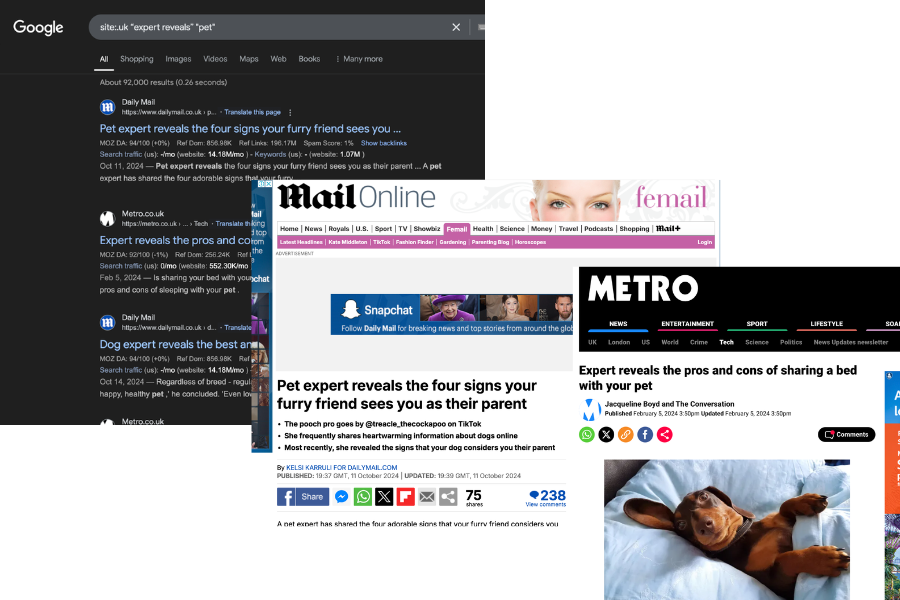
For client coverage in the UK, I use the search query “expert reveals” “topic” site:.uk” (seeing that there are several digital PR-led links from UK-based publications) - it’s a good source of insights for angles on expert commentaries.
Let’s say you sell premium beds, here are a few examples of expert commentary ideas you can create content on:
- A bedroom expert has warned against using washing-up liquid on windows:
- Expert's 'eye-rolling' technique to get back to sleep if you wake up at 3am:
- Bed expert says this is how you stay warm 'without spending any money'
Another popular approach to acquiring more links through expert commentaries is capitalizing requests for expert inputs on social media.
Start by looking for PR-related posts on X with hashtags like #journorequest or #prrequest. These are posts from journalists actively looking for expert comments - and having you jump into the conversation by directly sending email pitches is an actual leverage you can take.
You can also subscribe to platforms like Featured and Daily Press Roundup at PressFlow to receive notifications from publishers when expert commentary requests are made.
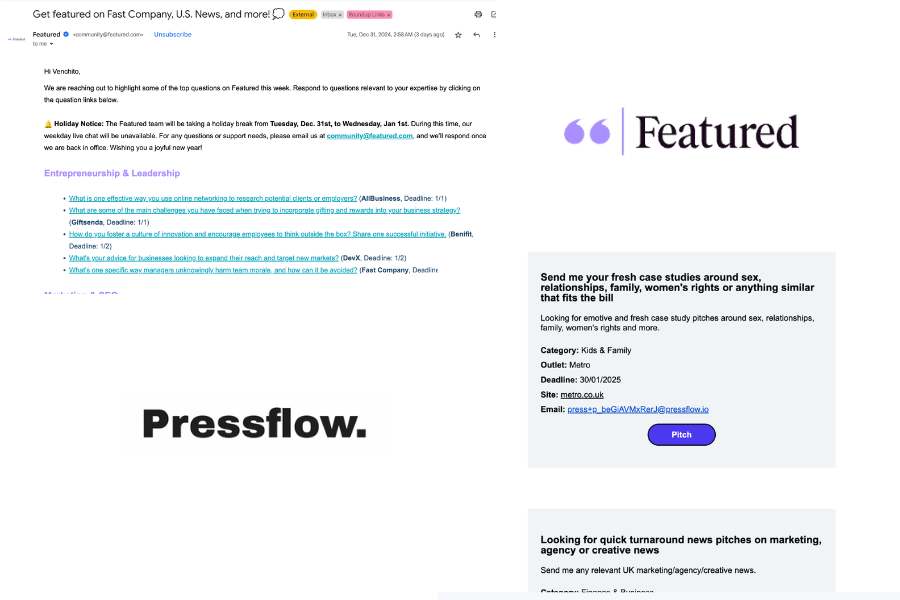
To increase your chances of being featured, ensure your responses are concise, professional, and tailored to the journalist's query.
Data-Driven Campaigns
Conduct and present original research or gather your own data. These assets could be surveys, experiments, or analyses that offer fresh insights into a topic.
If you don’t have the capacity to collect your own data, you can source information from public databases. Then, find unique angles that you can use for your own content.
One way to spark digital PR ideas for datasets is by using Google’s search query: “study reveals” “topic” sites:.co.uk” - replace it with other TLDs (aside from .uk) if you’re in the US or Australia.
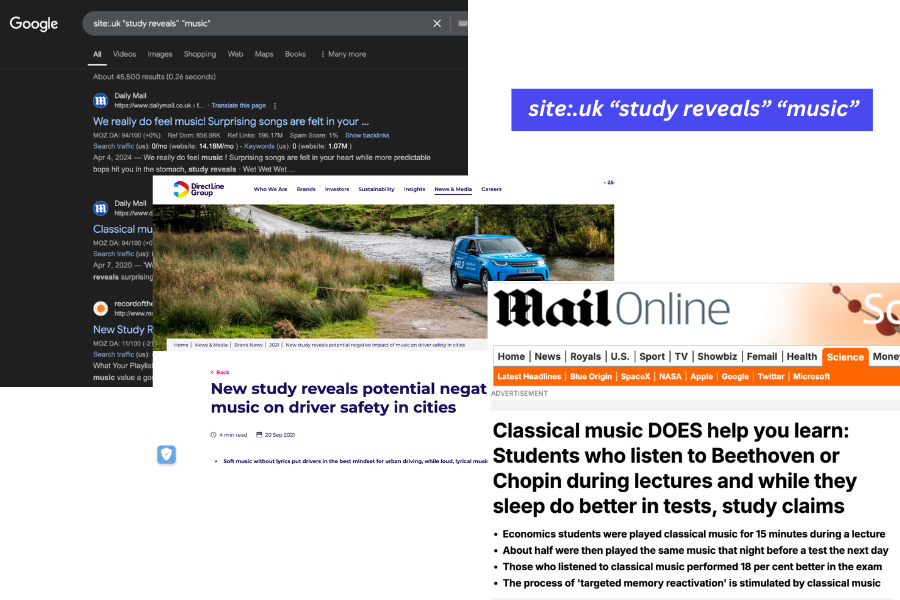
Then, filter the search results from last year to the current year (if the current year is 2026, filter results from 2024 to 2026).
You don’t have to reinvent the wheel. Since they published a similar dataset last year, they’re likely to be receptive to new, unique insights/angles on the given topic—this time, with a new dataset.
Reactive PR
Reactive PR leverages trending topics and breaking news to gain quick exposure and backlinks.
By identifying current trends, you can leverage the existing desire for journalists to cover the story, making it easy to get coverage for your input.
Monitor current events and spot viral topics using tools like Google Trends and Twitter Trends.
For instance, if there’s a sudden spike in demand for eco-friendly products, and you sell sustainable packaging, you can create content or offer expert insights on the subject.
Time-sensitive pitches are more likely to gain traction, so being one of the first to create content that resonates with a relevant trend increases chances for coverage (and more links due to the campaign).
Product Updates
Generate links from coverage of your new product updates, by sharing the behind-the-scene stories, founders’ commentary, or any interesting information about your new product (or its new product update) that would interest journalists and publishers.
For more best practices, you can check out this guide for more digital PR tips.
4. Member Discounts
Offer exclusive discounts to linkable audiences (e.g., teachers, military personnel, nurses, first responders, etc..) by creating a dedicated landing page for each discount type.
Highlight how the discount aligns with their readers’ interests to make the audience group feel personally catered to.
Make a list of websites with roundups or list pages for discounts. Start your search by finding pages linking to your competitors, using Ahrefs or other link intelligence tools.
Reach out and pitch your product for inclusion.

With a highly personalized email outreach, you’ll likely get a 5 to 15% conversion rate in your outreach emails using this eCommerce link building strategy.
5. Affiliate Programs
Another eCommerce link building tactic that leverages deals and offers is affiliate programs. This strategy acquires links and offers a way to expand your brand’s network by adding a distribution channel for your products or services (affiliate network).
Launch, publish, and design an affiliate program page with the best-converting copy. Treat it like a linkable asset to attract publishers to link to your page.
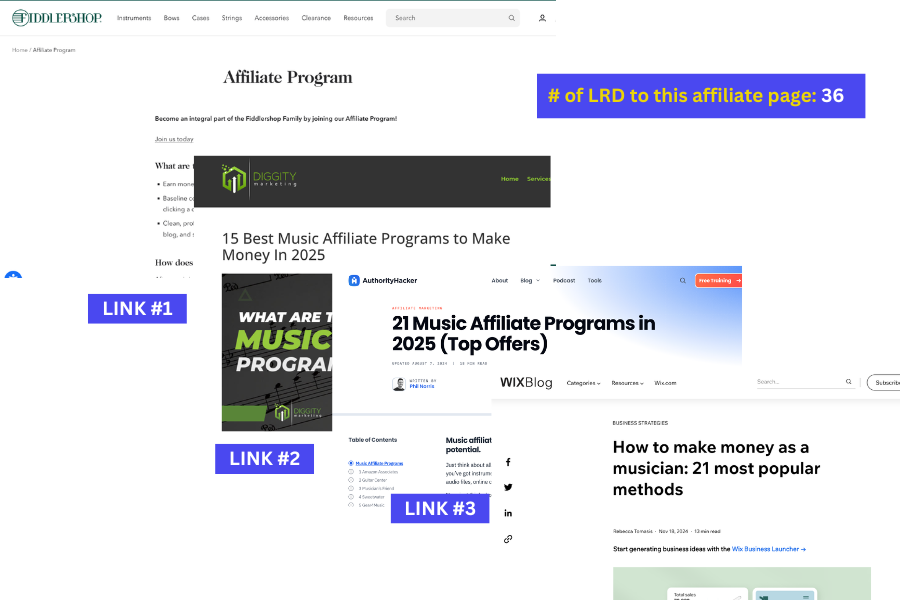
Get included on affiliate roundup posts, such as “top affiliate programs in [niche]”.
While most of the links from this technique come from the online marketing and finance verticals, the link value from high-DR sites is still worth pursuing.
Monitor mentions of your affiliate program using Ahrefs’ Alerts or BrandMentions. Ask these site owners to credit mentions with links.
6. Content Partnerships
Compared to new content (i.e. guest posts), existing pages with significant organic traffic (currently ranking for informational keywords) are pages worth pursuing for backlinks.
This is especially true if you’re targeting the types of backlinks that drive business value to your pages in terms of lead generation and branding. Links from these pages can drive second-hand traffic to your eCommerce.
Content partnerships, also known as niche edits and link insertions, comprise the majority of eCommerce sites' link profiles today.
The ease, relevance, and value of niche edits play a significant role in driving quick wins to product category pages (many eCommerce SEOs find this type of page challenging to build links to).
The approach in prospecting for niche edit opportunities is almost similar when you prospect for guest post blogs (the only difference is you add published articles when doing link prospecting).
The advanced search operator (site:DomainName.com “topic”) is used to find topically relevant blog posts. Filter the search results by two years from the current year (2023 to 2026, if the current year is 2026) to sort search results with recently updated, published pages.
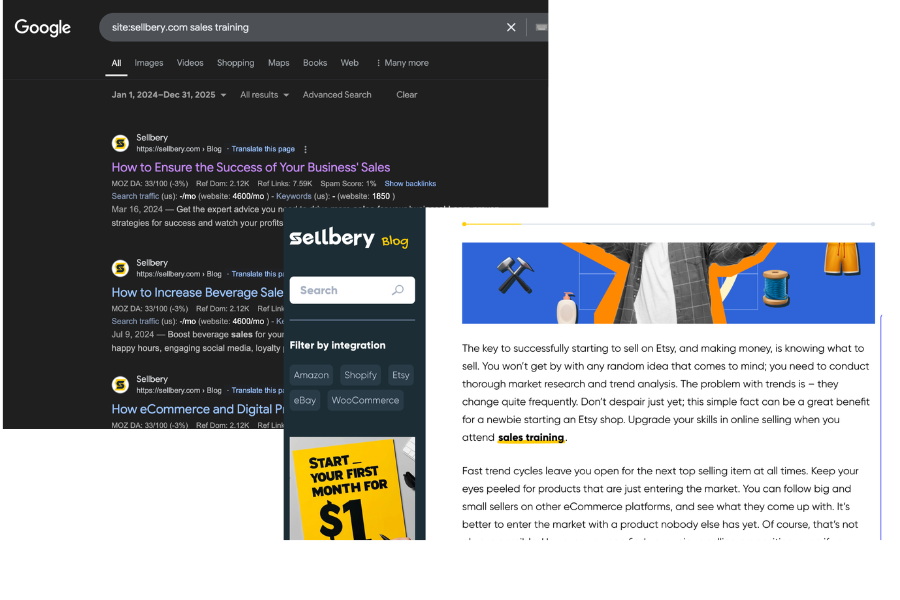
Send outreach emails to publishers of these pages asking for niche edits. You can incentivize them by offering free products or reciprocating the link by linking to the best content from your blog (or other articles from your other websites).
7. Product Reviews
Getting product reviews is still viable if the reviews are legitimate and honest.
Focus on getting bloggers and influencers with an engaged audience (not necessarily massive, but targeted toward the potential customers you’re looking into).
Send your products and clearly state that you want an honest review without any obligation to provide a positive outcome—this works better than forcing them to write biased and fabricated reviews.
I recommend asking for links to point to the product category page (where the specific product is located) or to the homepage (if it’s more properly context) - using branded anchor texts.
8. Reverse Engineer Competitors’ Links
Developing link building strategies in 2026 boils down to understanding what the top players do - replicating tactics but making it better for your site.
Analyze competitors’ backlinks using tools like Ahrefs. You can use Link Intersect to uncover high-potential pages linked to your competitors, but not to you.
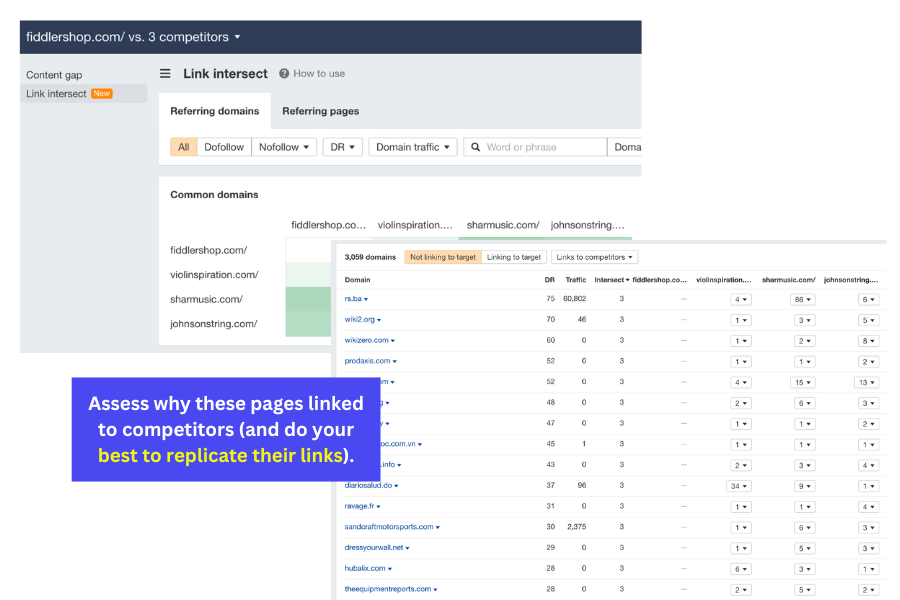
For instance, if you find several roundups or list pages that mention your competitors, contact them and ask for inclusion, emphasizing why your product/service deserves to be included.
You’ll get insights rarely seen in reverse engineering competitors' link profiles. A few notable patterns you could find are:
- Specific link types that can easily scaled to target more link opportunities of the same kind (multiple links from a single link building strategy) - (e.g. associations, local sponsor pages. etc..).
- Anchor text ratio (as mentioned earlier) so you can figure out the best percentage for anchor texts.
- Linkable audiences that are likely to resonate more for links in your industry (i.e. parents, students, or veterans).
- Topical guides you can recreate (but doing it better and more comprehensive) - i.e. Guide to Buying a Violin.
Do this as part of your SEO tasks to generate new insights into link building and developing content assets with a high potential for earning links.
9. Publish Content-Led Assets
Many successful link-building campaigns we’ve executed for our clients in our link building agency (and even case studies we’ve seen in others’ SEO and digital marketing agencies) have produced content-led assets.
Create high-utility, value-driven content assets to better build and earn links through relationship-building and manual outreach approaches.
Start producing guides to appeal to a broader audience that promotes and supports links for their audiences.

Publish content around audiences that fit your current niche/topic. Linkable audiences include:
- Teachers
- Caregivers
- Parents
- Senior citizens
- Veterans
- Health conditions sufferers
- Job seekers
- The unemployed
- Local community
- Students
- Families of substance abusers
Aligning content with each intended audience's needs, interests, and challenges guarantees that links will be converted from each link building campaign.
10. Links from Comparative Pages (“Best of X”)
In addition to publishing high-utility, value-driven content assets for links, we have added product-led link building as part of our core link building services.
I’ve covered this entirely in my guide on product-led link building. The premise is simple: Leverage the unique aspects of our client’s product or service to attract and earn links.
We highlight the product’s unique proposition to position it as the best possible solution for the challenges, needs, and problems it addresses in the market.
Start by finding “best of X” articles and roundups for the product or service using Google search (with advanced search operator inurl:best “product category”)
You can use Ahrefs to find more “best of” pages linked to your competitors.
Reach out to the authors/editors of these articles and ask for inclusion. Offer insights into why your product stands out in terms of quality, value, or innovation.
For example, this comparative content highlights our client as a premier choice for advanced cellos.
11. Unlinked Brand Mentions
Tracking unlinked mentions of your brand is a 2013-ish link-building strategy. Still, it is considered highly effective in generating product-led links in 2026, especially for reputable eCommerce brands with extensive product coverage.
Given that more publishers are producing content that highlights other people’s products in their roundups and different types of content, it is more common to see articles mentioning the brand (but without links).
Track unlinked mentions of your brand, product, and names of thought leaders in your organization. We use tools like Ahrefs’ Alerts, Mention, or Google Alerts to get notified of those brand mentions.
Send pitches to authors of those articles and request that they convert the mention into a clickable link.
Need help with link building? Get your free strategy call. Let’s talk.
If you liked this post, you can follow me on X @venchito14.
How to Get Backlinks in 2026 [Leveraging What Works]
Take it from someone who’s been building backlinks since 2013.
Getting backlinks today is more about leverage: scaling link building campaigns through the right teams, repeatable processes, and strategies aligned with your business objectives and the realities of your industry or client’s space.
This guide isn’t a rehash. It’s a deeper look at how to get backlinks today – what’s really important, and what’s getting backlinks in 2026 that nobody’s talking about yet.
If you’re tired of the “same-old” link building tactics and looking for real-world methods that earn links and scale, keep reading:
Target Pages That Drive Revenue
One of the common mistakes SEO professionals make is diving into the actual execution of link building campaign without having the right strategy.
And when I say strategy, it’s not solely about the type of links you want to target and the methods you use (content seeding, product-led link building, listicle outreach, etc.); it’s also about choosing the right pages to build backlinks to.
Too often, link builders focus on blog posts or generic guides, as they are easier to pitch, but these don’t always align with what actually drives sales or leads.
One high-impact link building skill is learning how to align link building efforts to business objectives, so you can push rankings where it matters most.
Here are a couple of ways to pinpoint what pages to build links to:
Ask the client what matters most.
Start by asking the most direct question: which pages drive your online business? If they don’t provide the answer, you simply get access to their Google Analytics and Search Console.
Get clarity on
- What offers or services generate the most revenue?
- Are there specific categories or seasonal products to push?
- What pages are being prioritized by internal stakeholders – i.e. top management?
The answers you get will tell you where your link building needs to support business goals, so you’re not just building links to pages for traffic’s sake.
Use Ahrefs to find pages that need a push.
One of the simplest yet smartest ways to prioritize is to find pages that are already ranking in positions 6-20 for high-intent keywords. These are the pages closest to winning, and they often just need a handful of quality backlinks to break through.
Go to Ahrefs → Site Explorer → Organic Keywords. Filter for positions 6 to 20. Look for keywords with clear buyer intent (e.g., “buy”, “services”, “top X”, “best [product]”).
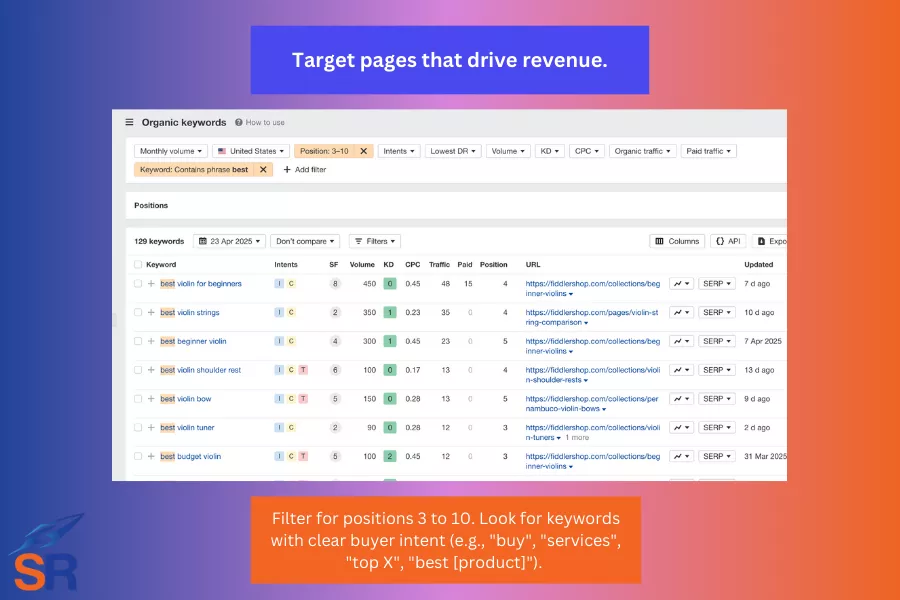
If you see that top competitors have 25 to 30 referring domains, and your page only has 5 to 10, you can close the gap with focused link building.
Look at conversion-driven pages.
See which pages consistently generate leads, sign-ups, or purchases, and if there are any high-converting pages stuck beyond page 1.
The idea is to build a few targeted backlinks to a service or product category page that drives actual revenue. Better building links to blog posts (of course, there are exceptions, but prioritize commercial pages in that matter).
Benchmark against competitors’ top-linked pages.
Reverse engineering your competitors by assessing how they attack their link building campaigns.
You can use link intelligence tools like Ahrefs to see which pages they build more links to (i.e., tools, data posts, etc.). This would give you insights and help you decide whether you need to:
- Build direct backlinks to your own target page
- Create a supporting asset to pass link equity through internal links
- Build domain authority first to compete against their top-ranking pages by creating more backlinks to your homepage or top-level content.
If you’re working with a site under DR30, start with homepage or top-level page links to build overall authority so that you can rank for more competitive keywords down the line.
However, for more established domains, you need to focus on revenue-driving pages, such as product category pages, high-intent service pages, or core solution hubs.
Audit Content Library to Find Link-Worthy Pages
Replicating what works already on your site in terms of earning links is the best way to get more quick wins (double down on what works).
The advantage is that you already have resources in place, such as your internal team, subject matter experts, and knowledge base that helped produce those initial assets. Instead of starting from scratch, you can double down on what’s proven to work and get more links with less friction.
You can also strengthen relationships with publishers who’ve linked to you in the past. By offering updated or future-related content (that you will then publish), you create opportunities for recurring links (not just to the original asset, but to other linkable pages within your site that also deserve visibility).
In our link building agency, we first identify which content assets from the client’s site can be effectively used for the link acquisition campaign, typically for content-led link building, product-led outreach, and link reclamation.
Start by reviewing all indexed pages and use tools like Ahrefs or SEMRush to extract performance data. Then, assess:
- Which URLs already have referring domains?
- Which content types earned links before (e.g., guides, templates, stat roundups)?
- Are any of these pages still relevant, or can they be refreshed and relaunched?
This creates a clear map of what content to push again for backlinks.
Here’s how to tie scalable link building strategies to the existing assets of your site:
- Content-led link building: Use evergreen blog posts, data roundups, industry guides, templates, or tools to create resource pages for outreach and contextual placements.
- Product-led outreach: Repurpose product pages, feature updates, or comparison assets to secure links from reviewers, bloggers, or roundup articles in your niche.
- Link reclamation: Identify pages with outdated URLs, past press mentions, or unlinked brand citations, and recover lost opportunities through targeted outreach and cleanup.
Auditing the content library and replicating what works is strategically sound, as you link the right asset to the right link building tactic, creating a stronger semantic relationship between the content type and its intended backlink.
» Not all backlinks are created equal. Learn the different types of backlinks and which ones actually move your rankings.
Systematize Link Building Strategies You Use Often
Random tactics don’t sustain results; repeatable systems do. That’s why one of the most valuable steps to scale link building is to build internal processes around the link building strategies you rely on most.
At SharpRocket, we’ve built robust, battle-tested processes for product-led outreach, content-led link building, and brand link reclamation.
We’ve created process maps that guide how our team operates on a daily basis. And by having the team fully own the tactical execution, it frees us (executives and the strategy team) to focus on the more strategic elements of link building, such as competitive analysis, campaign ideation, and client-specific customizations.
In terms of systematizing strategies, automation can dramatically speed up the tactical side of the process, especially in prospecting, data gathering, and link building outreach.
Here’s how we streamline our workflow:
Ahrefs for Prospecting and Research
We use Ahrefs’ Site Explorer to analyze competitor backlinks and identify high-authority referring domains worth pursuing. Another Ahrefs feature, its Content Explorer helps us find topically relevant articles and linkable pages that align with our assets.
Hunter.io for Contact Discovery
Using Hunter.io (with its Chrome extension), we collect and validate email addresses directly in our prospecting spreadsheet, allowing the team to skip manual email digging.
Gmass or Smartlead for Outreach Automation
These tools enable us to send bulk, personalized outreach emails, schedule follow-ups, and monitor open and reply rates, all while managing campaigns within Gmail or a dedicated outreach platform like SmartLead.
Internal Prospecting Workflow
We manage everything using Google Spreadsheets, equipped with a duplicate checker to ensure no overlapping outreach. We also use monthly master tabs for historical tracking and role-based assignments based on each team member’s niche or outreach strength.
Having a robust system like this makes it easy for us to assign link prospects, avoid collisions, and delegate tasks clearly, all while keeping the campaign agile and accountable.
» Tired of basic link tactics? Discover advanced link building strategies that focus on quality, context, and long-term SEO results.
Use Co-Authoring to Get Strategic Content Placements
Co-authoring content is a strategic way to earn high-authority backlinks while leveraging another person’s distribution reach. It creates a mutually beneficial exchange: you produce a content asset worth sharing, and your co-author uses their platform, relationships, or publication access to distribute it.
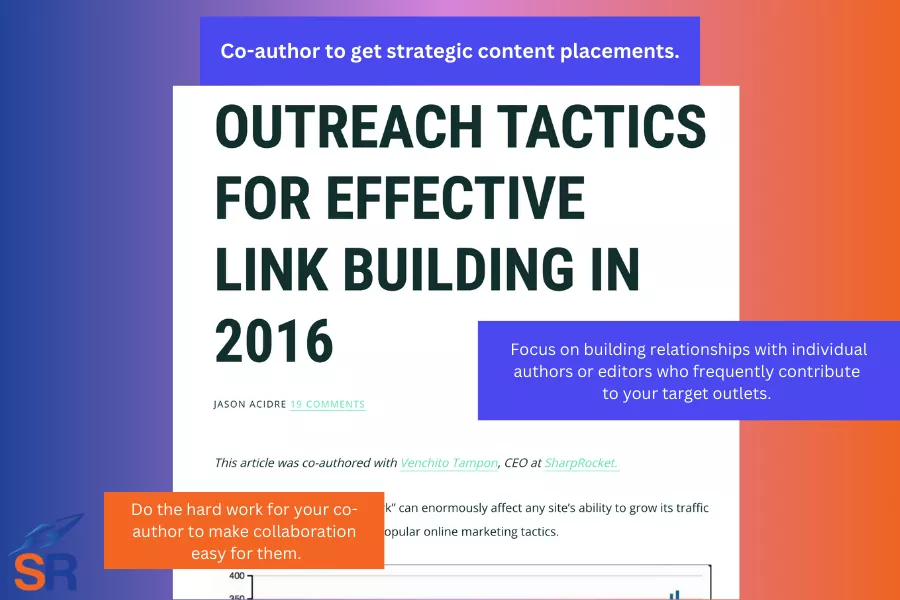
The best way to initiate this is to produce high-utility, original content on your site first, which will serve as solid proof of your expertise’s caliber, before engaging in outreach efforts to ask publishers to co-author with you.
The key is positioning the collaboration as a value-first exchange.
Here are a couple of ways to succeed with this approach:
Offer a Complete Draft or Framework.
Do the hard work for your co-author to make collaboration easy for them. Reach out with a nearly finished piece or a clear outline that aligns with their target audience.
Leverage Interview-based Contributions.
Send targeted authors a few insightful questions (not a full list of questions most SEO bloggers did in the past for long round-up articles).
Then, incorporate specific responses to relevant sections in the content. This makes the content more comprehensive and collaborative, giving co-authors a reason to co-promote or publish.
Co-own Distribution
Structure the deal so that they receive distribution through their network (e.g., social media followings, newsletters, client blogs, partner newsrooms), and you retain authorship or co-authorship credit, along with the backlink.
Target Authors, Not Just Publications
Focus on building relationships with individual authors or editors who frequently contribute to your target outlets. It is much easier to do co-authorship than a cold editorial pitch to the publication itself.
» Want to earn links by building your personal brand? Learn how to use authorship to improve link building and grow trust with publishers.
Analyze How Writers Actually Link To Sources
If you want to earn backlinks that last (either from creating linkable assets that passively earn links or through manual outreach), you need to understand how real writers reference content.

Spend time reviewing how top-tier publications and trusted blogs link to external sources. Pay attention to:
- Where the links appear within the article
- Preference of linking (reason for linking – e.g. how I chose the brands for this list).
- What kind of content do they link to (guides, original data, statistics, thought leadership)
- How the link is framed (look at the sentence, not just the anchor)
- What type of anchor text is used (descriptive, partial match, branded)
Writers often use descriptive anchor texts, not just exact match keywords, because they read more naturally and fit the editorial tone. For instance, instead of simply using “link building agency,” you’ll see publishers using descriptive anchor texts, such as “this case study by a leading outreach firm” or a “comprehensive breakdown of scalable link tactics.”
Understanding how editorial links work can help you craft content to become more linkable, as it aligns with real-world citation patterns.
Think and write as if you’re writing for top-tier publications. Match the content to how publishers could cite your work.
You can also use it to inspire your outreach campaigns with better angles, as your outreach suggestions mirror how writers structure references.
» Want backlinks from high-authority sites? Learn how to get DA 90+ backlinks with practical, white-hat strategies that actually work.
Build Strategic Alliances.
One of the sustainable methods to get hard-to-replicate links is by building genuine relationships with like-minded entities (people, brands, or organizations that share your values, audience, or goals).
The central premise is to form strategic content alliances with emerging voices and influential players in your space.
Look for people or brands with these attributes:
- Share similar goals or serve a common mission (e.g., ethical brands, open-source communities, educators).
- Target the same audience, but aren’t direct competitors.
- Hungry for growth, visibility, collaborations, and amplification, as they are still emerging influencers in your industry.
- Publishing regularly and investing in their website or content marketing.
Relationships take a long way in accumulating multiple link opportunities, often without the need for formal outreach.
Here are a few examples you can gain from relationship-based link acquisition:
- Content syndication: One party amplifies others’ content, and other publishers share yours, including a contextual backlink in their article.
- Cross-promotion: Mutual link exchange, where you link to their relevant article as a reference, and they reciprocate in future content.
- Co-created content (mentioned earlier): Roundups, webinars, or shared research pieces often include backlinks to both parties.
- Earned mentions: As they reference case studies or success stories, you’re more likely to be cited naturally.
By doing what’s unscalable (building relationships), you scale link building as you increase your trustworthiness and respect in the industry. This passively attracts links from other like-minded publishers, leading to better semantic proximity and more editorial trust for your site.
» Struggling to build links in a small niche? Here’s how to build backlinks in very small niches without relying on big content or outreach lists.
Use AI to Deepen Research, Then Humanize for Link-Worthy Content
If you rely on what other SEO publishers teach about AI-written content to pass AI detector tools and could rank well in Google’s SERPs without human editing, think again.
Instead of using it to generate entire articles that may lead to generic, lifeless content, you can use AI to go deeper into research and insight discovery.
By augmenting your content creation strategy without fully automating it, you create a significant edge in your content-led link-building campaigns.
As a content publisher for a decade now, I’ve seen how AI today gives you instant access to diverse perspectives, alternative phrasings, and emerging subtopics, all of which will help you build deeper, more comprehensive content that resonates well with writers, editors, and readers.
Marie Haynes, in her recent article, explains how she uses AI as a research assistant, not as a ghostwriter. Her best content writing tip is to input complex industry topics and let AI surface fresh questions, find patterns, and offer varied perspectives that might have been missed.
The output from here are refined topics that you can use to make the final content richer, more nuanced, and closer to the intent behind user searches.
Kevin Indig makes the AI-assistant writing process even more actionable. He breaks the editing process into four rounds that turn AI output into link-worthy editorial content.
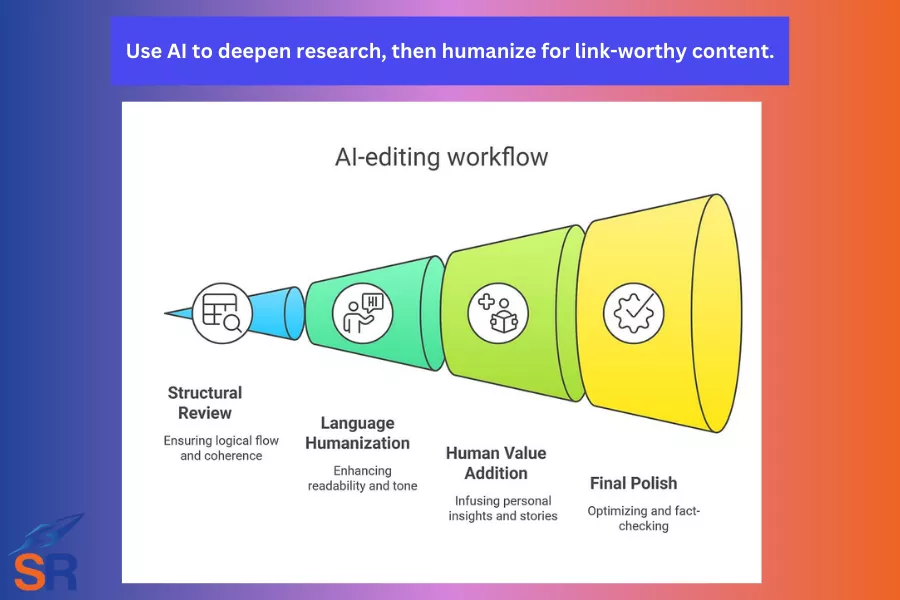
The elements that matter:
- Structure: Rearrange sections to create a logical flow and clarity, and remove redundancy to ensure the content directly addresses search intent.
- Language: Eliminate robotic phrasing. Vary sentence lengths. Use plain, human language.
- Humanization: Add personal opinions, stories, metaphors, cultural context, and emotional cues – things AI can’t replicate.
- Polish: Check for SEO alignment (headings, internal links, CTAs), fact accuracy, and final readability.
Helpful content assisted with AI’s deeper research helps you create a connection with your target audience, making it even more attractive for link building, as the content:
- Shows original thinking
- Demonstrates deep and real expertise
- Provides depth and clarity (easy to read, easy to skim)
- Feels authentically human (in other words, engaging)
The best content today comes from creators who know how to steer the algorithmic output with human judgment, insight, and originality, resulting in content assets that get cited by other publishers in their space.
Exclusive Directories
Creating your exclusive directories that feature other businesses in your industry can be a lever to develop relationships with other publishers. And it’s also a way to increase trust and visibility for your site, being the host of the directory.
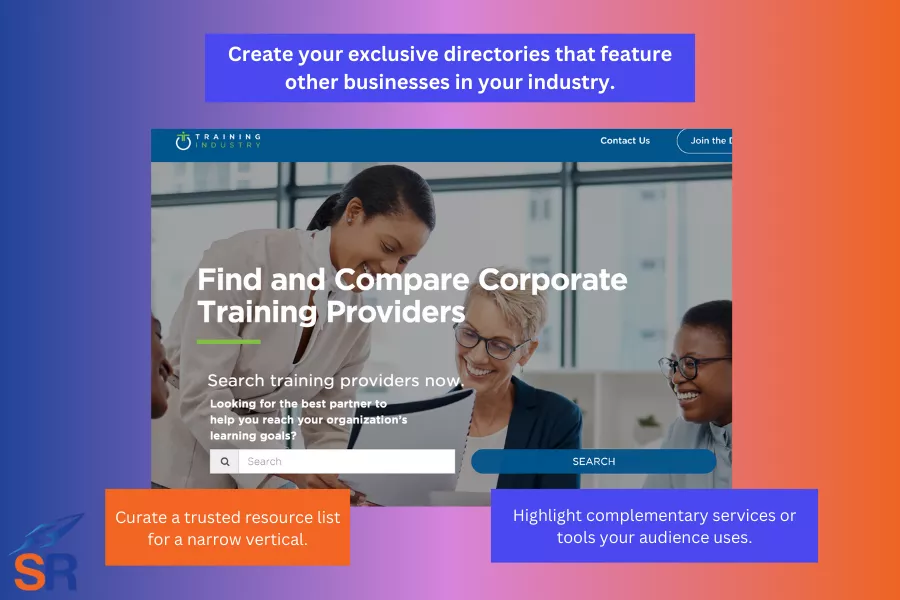
Choose a segmented audience you want to include in your directories. Examples could be:
- Vendors, service providers, or platforms that your audience actively seeks
- Indirect competitors: companies that serve your target market, but offer solutions you don’t
- Influencers, creators, or niche-specific brands are gaining traction in your vertical
- Thought leaders and educators, especially those who are underrated and don’t have an active social following, have significantly contributed to the community through their expertise.
The real power of exclusive directories lies in their shareability and ego appeal. When people are mentioned in a top list or featured as a trusted vendor, they are often proud of the recognition and naturally want to share or link back to that page.
You’ve given them third-party validation, which motivates them to share it on their blog, social media, or press page and add a backlink to their “As Featured In” or “Awards’ section.
Position your directory to target a particular segment of vendors. Instead of competing with G2 or Capterra, you can:
- Curate a trusted resource list for a narrow vertical
- Highlight complementary services or tools your audience uses
- Feature local or niche-based providers
For instance, Cyrus Shepard recently launched his agency directory featuring SEO and digital marketing agencies he trusts to deliver results.

What makes this asset powerful isn’t just the curated list, it’s the implicit endorsement. Being included in a list curated by a trusted industry voice like Cyrus carries authority, credibility, and immediate shareability.
» Need quick wins for your SEO campaign? Try these easy link building strategies that are simple to execute but still effective.
Build a Learning Center
Creating a learning center is one of the most effective long-term, linkable asset investments you can make, benefiting far beyond just SEO. By publishing a structured hub of educational and evergreen content, you establish your website as a go-to source of information in your niche, where visitors would go directly to your learning center to digest more of your content.
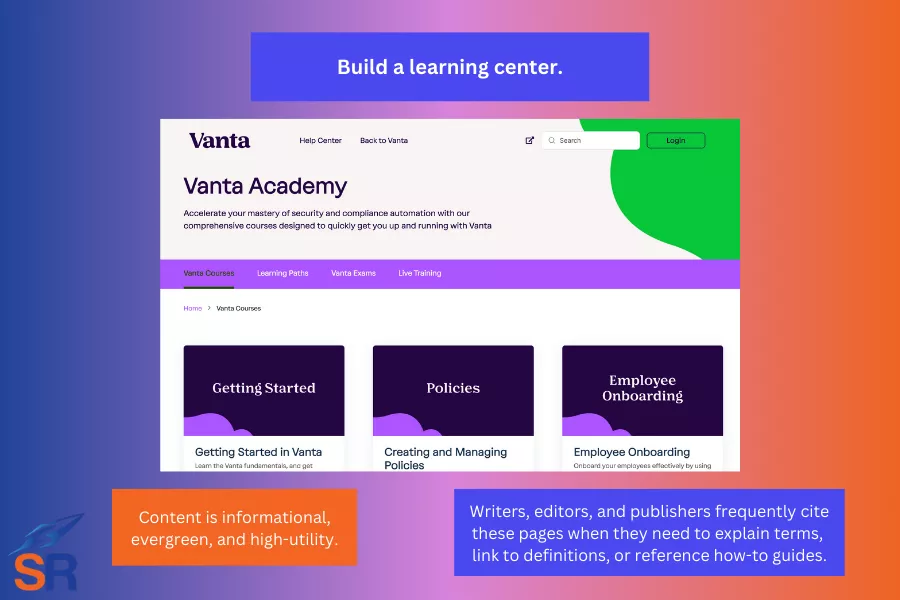
In many ways, your learning center becomes a solid linkable asset that generates continuous backlinks, given that:
- The content is informational, evergreen, and high-utility
- It can rank for question-based informational queries, such as “What is [industry term]”, “How to [solve problem]”, or “Why use [solution]”.
- Writers, editors, and publishers frequently cite these pages when they need to explain terms, link to definitions, or reference how-to guides.
By investing resources in a learning center, you compound your benefits into more passive link earning, from which you can maximize and reinforce link equity across your landing pages through internal linking.
Another way learning centers can help your website beyond just SEO is that they reduce the support load by acting as a self-service help desk (think FAQs, tutorials, and troubleshooting guides). This way, it supports your sales team by educating and attracting the right types of customers.
» Running complex outreach campaigns? Learn how to manage advanced link building campaigns with better systems, tools, and team workflows.
Align Link Building Efforts to Business Objectives
The best link building campaigns are the ones that support the broader business goals behind those rankings. Your link building efforts should be directly tied to what matters most to the business.
In the recent 2025 Link Building Survey by Citation Labs and BuzzStream, more SEOs are shifting their focus from raw link volume to strategic alignment (building links to pages that serve a specific purpose in the customer journey) – a link building approach I’ve been an advocate for years.
When your link building becomes a business growth lever, it supports your broader objectives, such as:
- Your reporting improves (you can measure business impact, not just link count).
- Your content prioritization becomes clearer (what to promote, what pages to get most inbound links)
- Your internal buy-in strengthens, especially when discussing link building campaigns with sales, product, brand teams, CMOs, and other key internal stakeholders.
- You retain agency/client relationships as you’re driving more meaningful results.
Have an end in mind when executing your link building campaigns, incorporating important pages for the business, which include:
- Revenue-generating product and category pages
- Resource hubs that boost topical authority
- Long-form content that powers discovery and brand awareness.
I’ve covered this on how tools like Link Launch can make your link building investment more justifiable. Check out this guide on our best link building tools for SEO.
Remember that the best links are the ones that move both rankings and revenue.
One Mention to Many
Showing up in many product listicles can help you earn compounding, passive backlinks from other product listicles within your niche, often without doing outreach.
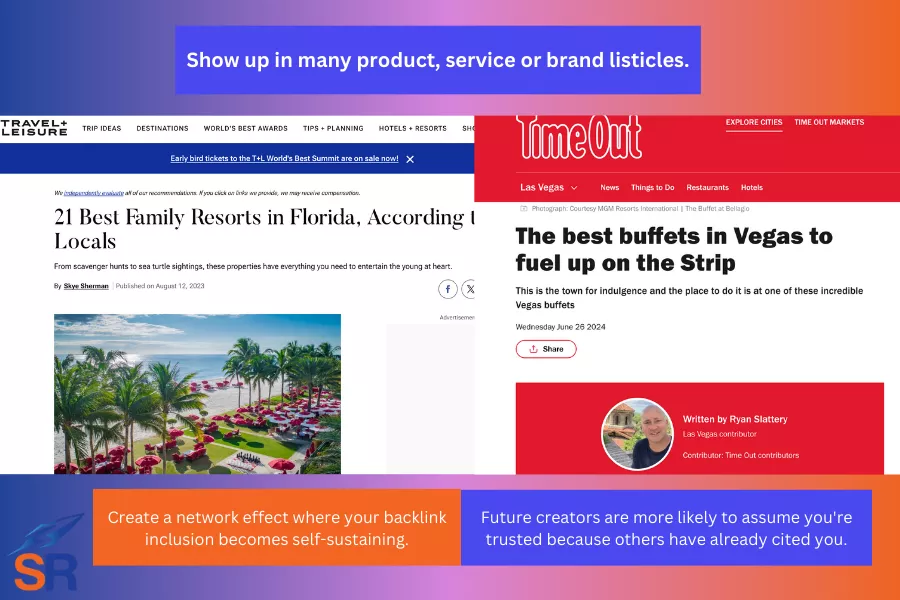
Aim to have your brand included in many product and content listicles by manually pushing direct link requests. Given that publishers who build these lists often use existing listicles as their search base, if your brand or content consistently appears in trusted lists (your roundup, others’ listicles, directories), future creators are more likely to assume you’re trusted because others have already cited you.
It puts your brand, product, or content in front of more eyes, creating a network effect where your backlink inclusion becomes self-sustaining. That’s where the real backlink compounding happens.
Scalable Reverse Engineering.
Reverse engineering competitors and even your own brand is an old link-building tactic, but few implement it systematically at scale and take full advantage of it.
By tracking brand mentions using Ahrefs’ Alerts, Google Alerts, or Mentions, you strike while the page is fresh.
Pitches sent just a few days after a page gets published (or indexed) have a much higher success rate than cold pitches sent weeks or months later (similar to how reactive digital PR campaigns work – you react immediately on breaking stories to take advantage of the hype/virality effect).
Given that the content is still top of mind for the author or editor, it is also easier to edit (especially before it’s widely shared) and actively monitored (since writers often review early feedback on the content) – this window gives you a key advantage.
Instead of pitching something out of context, you’re offering a small, relevant addition to a just-published piece. So, whether it’s a quick request to add a link to your own brand (link reclamation) or a subtle suggestion of an alternative to a competitor, editors are far more receptive when the content is fresh.
Another advantage of scaling reverse engineering is that you can turn mentions into relationships.
When someone mentions your brand (linked or not), it’s an opportunity to build long-term relationships. By appreciating their kindness, you position yourself as helpful and more human, and when scaled, it could lead to more contextual backlinks and future content collaborations.
» Looking for links that actually improve rankings? Explore our link building services designed to achieve your organic growth.
Advanced Link Building Strategies in SEO for 2026
Backlinks remain one of the strongest signals that influence rankings. Even with all the changes in how users search (AI overviews, featured snippets, and LLMs like ChatGPT and Perplexity pulling answers directly from the top results in organic search listings), link building would remain a vital component of SEO.
Given that AI tools reference trusted sources, if your site, product, or content is cited often, it has a better chance of showing up as a referenced authority in search results and AI summaries and answers.
This shift makes link building not just an SEO tactic but has become part of your brand visibility strategy. It helps in the overall packaging of your brand on search, helping you strengthen the following:
- Discovery – making sure people find you from organic search listings, LLMs, and curated bottom-of-the-funnel content of other publications.
- Reputation – proving you’re a trusted source of information in your space.
- Conversions – sending traffic from diverse sources (referral traffic from other curated listings, ChatGPT, forum discussions, etc..).
- Brand positioning is at the top of your mind and the top of the search, as your target audience may find you in different places.
Link building is no longer a game of pushing rankings; it is now a game of maximum visibility, where more visibility can help influence the purchasing decisions of your target customers.
In this guide, I’ll discuss advanced link-building strategies that go beyond the basics and help you stay visible in an SEO landscape shaped by AI and brand authority.
1. Citation-Driven Links
Search engines and AI tools like ChatGPT depend on sources they trust. These tools don’t just look at who has a link. They look at who gets mentioned often across the web. This is where citation-driven link building becomes a powerful strategy.
What Are Citation-Driven Links?
Citation-driven links are backlinks from sites that mention your brand, services, or content in a trusted context. They are references found in curated lists, industry roundups, tool directories, and comparison content pieces (pages where decision-makers actually go to evaluate options).
AI Overviews, ChatGPT responses, and search engines use these mentions to assess credibility. If your website is included in well-known directories, comparison articles, and tool roundups, it tells algorithms your brand is relevant, trusted, and deserves its proper visibility.
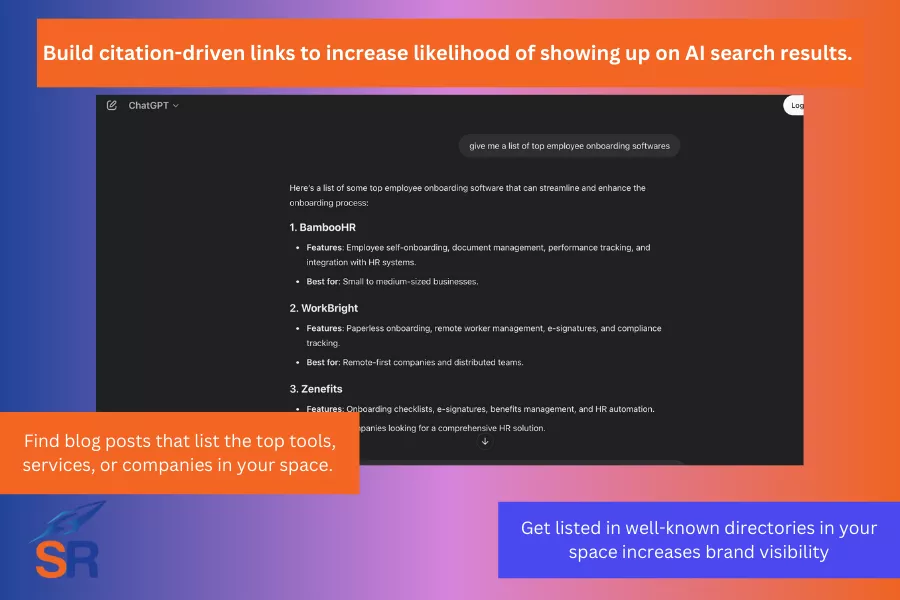
How to Earn Citation-Driven Links?
Focus on getting featured in content where people are already looking for solutions. Here are actionable tips to help you earn citation-driven links:
Pitch for Industry Roundups
Find blog posts that list the top tools, services, or companies in your space. These roundup pages already exist and are visited by people ready to decide. Your link building goal is to get your brand featured.
For instance, if you’re promoting a project management tool (a highly saturated space), you can search for roundup articles like “Top Project Management Tool for Remote Teams” and “Best Trello Alternatives For Agile Teams.”
These similar posts attract high-intent readers and could influence LLMs (with the listicle posts that rank) to feature your product as one of the go-to solutions.
Use an angle that makes your product stand out instead of a random, desperate email outreach pitch. Instead of just saying, “Please include this tool”, show why your tool deserves a spot. You can say:
“We’d love to be considered for your list of top tools for remote teams. Our platform has built-in video collaboration and task tracking that eliminates the need for separate Zoom calls—something many remote teams actively seek.”
Add credibility with results, use cases, or testimonials. If possible, share a client success story or specific outcome.
“One of our users reduced weekly meeting time by 40% after switching to our tool. We believe your audience of remote team managers would find value in that.”
Offer something in return to increase your chances of link placements in those citation-driven pages. Mention that you’ll share the post with your accounts once you’re included to get more reach, or suggest adding a helpful quote or stat to make the post more comprehensive.
Roundups exist to help readers compare, so highlight what makes your offer different or valuable from their point of view.
Submit to Trusted Directories
Getting listed in well-known directories in your space increases brand visibility and the likelihood of being cited in AI answers.
Circling back to our example earlier, if you’re offering a project management app, you can target trusted directories to be listed, like:
- Product Hunt
- G2
- Capterra
- GetApp
- Software Advice
These platforms are often the first stop for people searching for tool reviews or comparisons (in fact, many software users go directly to those tool comparison sites to find credible tools). Those trusted directories often appear in AI summaries, listicles, and Google’s top results for “Best X for [use/purpose].”
To maximize your product listing, write a clear, benefit-focused profile. Focus on your product’s purpose and how it helps. Use keywords naturally so AI and search engines understand what you offer.
“A project management app built for remote marketing teams. Features include time tracking, real-time comments, and integrated campaign dashboards.”
Ask your users to leave honest feedback. Reviews will help you stand out and influence decision-makers.
You may also add visuals and product walk-throughs. Include screenshots or videos that explain your key features, improving your engagement and increasing your chances of being cited by bloggers or roundup writers.
2. Strategic Content Placements (Link Insertions)
Many people are familiar with the term “link insertion” or “niche edits” when it comes to strategic content placements. These are about earning links from existing content that already has value.
Instead of writing a full guest post, you insert a backlink into a relevant paragraph of a published blog or article that is contextually worthy for the publisher to include your short-form content.
Search engines trust pages that are aged, indexed, and performing well in page rankings (they rank for keywords, able to get search traffic).
Adding your link to one of these strengthens your destination page by association, so you’re not building from a newly indexed page or an article with a proven SEO value.
Start with the right blog posts. Target high-quality blog content, not just any random blog, to get the best results. What you should be looking for:
- Blog posts with organic search traffic
- Topic that fit naturally with your content
- Sites that are open to updating older posts
Prospect for industry-relevant blogs and publications. Then, use the advanced search operator (site:domain.com “topic”) to find indexed articles of the target website. This helps you locate specific pages where your content could fit.
Then, you can use tools like Ahrefs or SEMRush to check if the domain gets traffic before diving into specific articles. You can filter for blog posts with organic traffic of 50 or 100>/month and page content with relevant topics or keywords.
When pitching to these bloggers, make sure that your destination link makes sense for them to include in their existing content. If you’re linking to a content marketing tool, don’t force it into a post about web hosting (it would only dilute your website’s off-page SEO relevance).
Instead, find blog posts discussing similar services, related informational content, or complementary tools. The link should enhance the page’s content, not distract readers.
Many publishers would appreciate getting pitches to improve more of their old content, particularly with the intent to add or regain the search traffic that may have been lost.
When pitching to publishers, you can offer value, such as improving the article with fresh data or adding a unique perspective on the article where it makes sense to link to your destination page for additional reference or resources.
3. Digital PR
Digital PR has become a core strategy for many SEO and digital marketing strategies. It helps clients earn brand mentions and links by sharing stories worth covering.
The brand strategy works well, given that journalists, influencers, and content creators always look for credible sources, fresh insights, and original data to cite in their articles.
Digital PR links are editorial and natural and often come from media sites or top-tier blogs, making them robust for SEO and brand visibility.
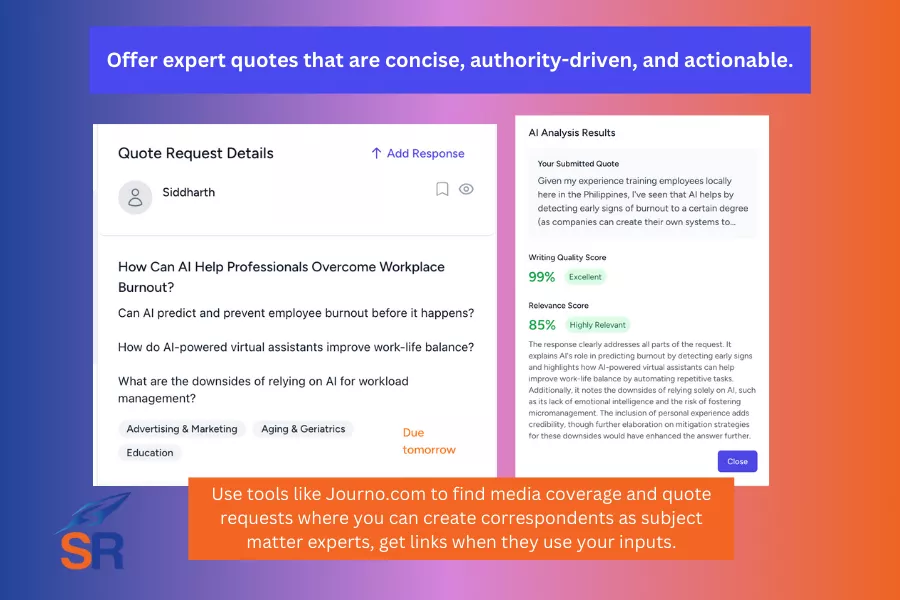
Expert Commentaries
One powerful way to do digital PR is by offering expert quotes to journalists that help share the story they’re writing. As reporters by profession, they can’t simply quote their own opinions. They need external inputs and credible insights to support their content, making their written content more trustworthy.
The best quotes are:
- Concise (answers what they look for: tip, insight, or trend).
- Authority-driven (use data, experience, or unique takes)
- Actionable (something readers can think about or apply)
There are a couple of platforms where you can find quote requests and media opportunities, including:
- Journo (new quote request platform by Search Intelligence UK)
- Qwoted
- Featured.com
Another way to leverage expert commentaries is to send direct pitches to writers or editors. If you have an interesting list of tips relevant to your industry by first search for what topics they religiously write for (based on the past year’s content), you can nudge them with your own sets of tips that will benefit their readers.
Make sure you track these opportunities using Ahrefs or Google Alerts. Thank the writer and stay on their radar for future stories.
Reactive PR
Reactive PR is all about speed and relevance.
You earn backlinks by quickly responding to trending topics, breaking news, or cultural moments with expert insights.
Unlike general digital PR, where you wait for coverage, with reactive PR, you insert your brand into the conversation while it’s still hot. So, the faster you react (in digital PR terms), the higher the chance your quote gets featured and your website gets cited.
It works because journalists and content creators move fast. When a story breaks, or a topic goes viral, they need expert input immediately. If you’re one of the first to offer a relevant comment, tip, or angle, you become the source they quote.
Start reactive PR by monitoring the news. You can use platforms like:
- Google News – Track industry keywords and breaking headlines
- Twitter/X Trending Topics – See what’s being discussed now
- Subreddits – Join niche communities in your space
- BuzzSumo / Exploding Topics – Catch early content trends before they peak
You can choose one or a combination of many to get more trending news as fast as possible.
Create a reactive content calendar to harness the power of trending news. Map out important days and events such as:
- Upcoming Holidays
- Industry-specific awareness weeks
- Annual news cycles
- Recurring events (like product launches, sports finals, seasonal changes)
Instead of passively waiting for links, you build a system that maximizes reactive PR and has it ready. This way, you can respond within hours, not days.
Data-driven Campaigns
This is one of the most reliable ways to earn press coverage using digital PR campaigns. Unlike reactive PR, where you wait for breaking news to take advantage of, data-driven PR involves publishing original data that supports a specific insight.
For the UK, US, and AU countries, journalists and bloggers love using fresh stats to strengthen their upcoming articles, and when they do, they credit you with the backlink (most to your homepage).
Here are a couple of ways to generate valuable data, even with a small team:
- Quick internal surveys: Send a short survey to your audience, email list, or LinkedIn connections (e.g., see State of Link Building Report or SEO Agency Survey).
- Customer usage stats show how users interact with your product or service. Your platform’s insights are unique, making them difficult to replicate.
- Market research: Use tools like Statista, Office for National Statistics (UK), Google Trends, or industry reports to pull data and then reframe it (or combine it with your other sets of data) to produce high-utility data insights.
- Publish data re-analysis – pull government or academic datasets and analyze them with a fresh angle (e.g., “Using data from the Bureau of Labor Statistics, we ranked the top 10 fastest-growing freelance jobs in the U.S.”).
You can check our guide on digital PR tips for successful campaigns.
4. Integrated Linkable Assets to Landing Pages
In the past, the long-term SEO strategy has been built around creating linkable assets to attract passive links, coupled with using them as a value proposition in manual outreach to get an initial set of links. From there, attracting link opportunities from publishers at their writing stage becomes more visible as the linkable asset ranks for informational research terms.
The model worked for traffic and got dozens of high-quality backlinks, which you can leverage further by internally linking from the most-linked page to commercial pages. This way, the links will pass SEO value to landing pages, increasing their chances of ranking for their respective keywords.
Linkable asset creation was isolated. It created a unique backlink, but it didn’t connect directly to pages that drive leads or sales.
The best approach for developing an advanced link-building strategy in SEO is to integrate linkable assets into your landing pages and core site architecture. Surrounding it through topic clusters that push value toward your key pages helps in so many ways, such as:
- Backlinks earned by useful content also benefit pages where you convert visitors (no more internally linking from linkable page to commercial page).
- Authority flows naturally through your internal structure.
- Your highest-priority page (“commercial pages”) gets stronger rankings, not just blog pages.
By doing so, your most important pages—those that drive sign-ups, leads and
Instead of keeping your content separate, you:
- Build tools, visuals, or mini guides directly inside your landing pages.
- Create topic clusters where blog posts link to service or product pages.
- Turn high-converting pages into link-worthy resources, not just sales copy.
- Make purchases and start earning natural backlinks, too.
Don’t treat content and conversion as separate. Think like this, “how can I make this page so useful that someone would choose to link to it?”.
Here are actionable tips for integrating linkable assets into landing pages:
Create Landing Pages with value-added content.
Enhance product or service pages with:
- Interactive tools (e.g., calculators, ROI estimators, checklists)
- Quick-start guides or “how to use this” sections
- Case study snippets that give real-world proof
- Infographics that explain processes visually
For example, a time-tracking SaaS tool can include a “Time Theft Calculator” on its product page, giving publishers and media outlets a reason to link directly to that page when discussing workplace productivity.
Support Pages with Strong Internal Links.
Build help articles, tutorial pages, and onboarding content that support your primary services. These can act as natural backlink targets when people search for instructions, definitions, or “how it works’ content.
From there, you can use thematic internal linking to pass SEO value to the commercial page.
Thematic Hubs (Topic Clusters)
Group related content together. A “hub and spoke” structure helps improve topical authority and link equity flow.
- Hub = a central landing page
- Spokes = supporting blog posts or case studies that link back to the hub
Thematic hubs like this help landing pages rank for more competitive keywords and make them more discoverable to linkers looking for credible sources.
5. Build Topical Authority
A topical authority is about becoming the most trusted, complete, and referenced source on a specific subject.
When you build topical authority, your website doesn’t show up for one keyword (which most SEO still operate to this day), but you start ranking across dozens or even hundreds of related search terms. By becoming the go-to person or authoritative source in your space, others start linking to you because you’re seen as the expert.

Here’s how to build topical authority and attract backlinks your competitors can’t replicate:
Choose a specific, business-aligned topic.
Pick one area where your product or service is highly relevant and where your team has deep insight or real experience to provide loads of “informational gain” that hasn’t been brought to the table.
The level of specificity you get will make your content more valuable to a defined audience and more link-worthy in relevant articles and roundups.
Build out subtopics that cover the topic thoroughly.
To become authoritative, your site should answer everything someone might ask within the space (a battle of high-quality “content volume”).
When a journalist or publisher looks for expert-level information, your site will have it already written and easy to link to. The idea is that your competitors may have 1 to 2 posts on the topic, but you’ll have 15+ highly targeted pages that connect and support each other.
Structure it as a topic cluster.
I shared earlier about organizing your content into a hub-and-spoke model. Cross-links between pages so users and search engines can easily navigate your expertise. Potential linkers can quickly see the depth of your coverage, making it more likely they’ll link to you rather than a thin, one-off post from someone else.
Add unique value that others can’t copy.
This is the step that locks in your backlinks. Include content elements based on your own data, tools, experience, or perspective (as I’ve shared in the integrated linkable assets section).
These aren’t generic tips; they are assets only you can offer. So, even if your competitor writes a similar post, they won’t have your exact angle or insights, making your content the preferred link target.
6. Value-First Outreach
Most link-building outreach fails because it’s one-sided (most of the time). Value-first outreach flips that, offering something helpful first (“reciprocity effect”).
Website owners, bloggers, and journalists receive dozens of link requests weekly. To stand out, your email outreach needs to answer one question: “What’s in it for them?”
Value-first outreach earns links by earning trust first, and here are a couple of ways to test in your email outreach campaigns:
- Link swaps—if you manage content for multiple clients or partners, offer a relevant link in return, but no direct change. This method helps you get exposure and stay within the conservative way of doing link building by using indirect or triangular swaps (not one-to-one link exchanges).
- Improve their content with helpful additions—offer insight, data, or clarification to make their existing content more comprehensive. Do the work upfront to make it easy for them to say yes.
- Share or mention their content first (scale it for priority link targets). If you already like their work, mention it in your content before asking for a link, giving them exposure and SEO value upfront. Then, use that goodwill in your outreach.
Value-first outreach works best when you think like a collaborator, not a solicitor.
7. Get Links From Prospect Business Sites (Not Just Industry Blogs)
When building the right types of backlinks, most outreach efforts focus on the usual: industry blogs, roundup sites, and content-focused publications. There’s nothing wrong with that unless you’re getting from sites with no significant and relevant traffic. However, there’s a high-value group to target for links that, more often than not, are overlooked. These are business websites.
Business websites are seen as legitimate by both users and search engines, as they have real-world operations, band equity, existing links from vendors, partners, and local institutions, and minimal outbound link spam.
Getting links from these types of domains carries more weight in link value and is often more challenging for competitors to replicate.
For example, if you sell premium workout mats. Instead of pitching fitness blogs, reach out to:
- Gyms or fitness studios that have a “Recommended Equipment” page
- Athletic trainers who list gear they use with clients
- Franchised gym chains that feature supplier shoutouts on their blog
Another example is if you offer eco-friendly packaging, don’t just target green blogs. You can reach out to organic food companies that:
- Feature vendors or suppliers they work with
- Highlight sustainability partners in blog posts
- Have “Sustainability in Our Supply Chain” sections on their site
I can give you more examples, but the principles remain the same: find more business websites with existing resources or blog sections where you can get contextual backlinks to your site.
8. High Link Value with Strategic Content Distribution
Most content distributed on other websites (“guest posts“) is treated as one-off link drops. The contributor writes the content, publishes it, and the backlink goes live. Done.
However, if that’s where it ends, you’re missing the actual value of external content assets. To build high-value backlinks, you need to shift from simply placing content to distributing content that ranks and drives traffic for you and the publisher.
It’s a win-win scenario where both parties enjoy the benefits of high-utility content (the publisher gets more traffic while bringing this traffic to the one contributing the content). That’s where strategic content distribution comes in.
Strategic content distribution means creating external content pieces that are designed to rank and crafted to match gaps in your target publisher’s SEO strategy.
So, instead of just writing a random topic, you write:
- On a topic (or keyword) that’s highly relevant to your target customers
- That fits well the publisher’s niche
- That’s currently missing from their blog or resources section
- That attracts search traffic over time, and they aren’t tapping into it yet.
Instead of a mere guest post, you create content that significantly has an impact on your website, given that links:
- Sit on a page that ranks, not buried archive post
- The blog post continues getting traffic over time, sending indirect SEO and brand signals
- Content earns secondary links when others reference the post
- You’re seen as someone who improves the site, not just using it for plain reasons.
Here’s how to distribute content strategically:
Find the right publishers.
Look for websites that have decent domain authority (e.g. Ahrefs DR30+), regularly publish new content, rank for keywords related to your niche, and accept contributions or have a blog that could benefit from SEO support.
You can use tools like Ahrefs, or SEMRush to assess traffic and ranking potential.
Identify content and traffic gaps on their blog.
Before pitching, do a quick content gap analysis by asking what keywords and topics they are not ranking for and are missing entirely from their blog. Are there blog posts ranking on page 2 that you can help improve or refresh?
To spot thin content, you can use advanced search operators (site: domain[dot]com “topic) or tools like Clearscope or SurferSEO.
Choose topics with the potential to get traffic or with steady search volume.
Target long-tail keywords with lower keyword difficulty (KD), a monthly search volume of at least 100 to 1,000, and that have a clear connection to your niche or target audience.
These terms are easier to rank for and can help deliver long-term traffic to the publisher.
Pitch content that helps them, not just you.
Craft your pitch around how the article can benefit their readers and increase traffic potential.
A sample addition to your outreach pitch would be:
“I noticed your blog doesn’t currently cover [topic], which has consistent search volume and ties closely to your audience. I’d love to write a well-structured piece on that, including a few unique insights from our team.”
“I’ll optimize the post to rank for [keyword]—and link to your internal content where relevant, to strengthen your rankings.”
You’re positioning yourself as a content partner looking for a more long-term role in content distribution, not a self-serving contributor only asking for links.
Need link building? See our link building services and schedule your free strategy call.
How Much Does Link Building Cost in the UK in 2026?
How Much Does Link Building Cost in the UK in 2026?
Link building pricing UK can range from £150 to over £950 per link, depending on the quality of the link, the authority of the referring domain, and the difficulty of your niche. A typical campaign budget runs between £500 and £15,000 per month. Lower budgets tend to focus on small placements, while higher budgets support larger-scale outreach, better-quality domains, and more supporting content.
What Determines the Cost of Link Building?
The cost of link building is not fixed. It depends on three major factors:
- The number of links you want to build
- The quality of each link
- The difficulty of your industry or niche
Understanding these factors helps you plan your link building budget wisely, whether you’re managing SEO in-house, working with an agency, or pitching a link building campaign to decision-makers.
Below, I break down how each of these elements affects link building pricing in 2026.
The Number of Links You Want to Build
The more backlinks you want to build, the more budget you’ll need to allocate. Each link is acquired using resources, including time for content creation, outreach, and link prospecting, as well as budget and capabilities to write internal and external content assets to get the links.
Whether you’re running a small business campaign or a full-scale SEO operation, link volume is a direct cost multiplier.
For internal teams, securing higher volumes of links often means getting additional budget approval from senior leadership (either the Head of SEO or even directly the company’s CEO), especially if monthly SEO costs are expected to grow significantly.
For SEO agencies, higher link volumes often unlock better operational efficiency:
Bulk Discounts
Many link building agencies offer bulk discounts to clients who order a high volume of links. As the number of links increases, the cost per link often decreases, a typical strategy agencies use to encourage long-term partnerships and retain clients.
It’s a win-win scenario: clients gain better pricing, while agencies benefit from predictable workloads and revenue, making scaling link acquisition more cost-effective over time.
Streamlined Teams
When clients commit to larger link building campaigns, agencies can allocate full teams to the project, including dedicated outreach specialists, link builders, and content writers. With a good workforce focused on a single campaign, tasks are completed faster, quality is more consistent, and communication becomes more efficient.
So, instead of juggling multiple small projects, the team follows a single strategy with clear goals, leading to faster turnaround times, smoother coordination, and fewer delays. This structure allows for a more streamlined workflow and helps agencies deliver better backlinks at scale.
Link Metrics That Determine Quality
Better links cost more, given that they are hard to earn and carry more SEO value. These links come from legitimate websites with real credibility, organic traffic, and authority.
Compare a low-quality link that costs £15 from a pure link directory (that offers zero SEO impact to your site) to a topically relevant editorial link that costs you £150 but passes more link juice, trust, and authority to your site.
Here are the key factors that influence link quality and pricing:
1. Topical Relevance
A link from a high-quality website in your niche sends a stronger signal to Google than a general site. For instance, if you’re doing link building for SaaS, you should aim for links from tech or software publications, not lifestyle blogs. Another example is a UK-based legal firm that can benefit more from links on law-focused UK domains than international news outlets with no legal content (unless it’s a digital PR campaign).
2. Organic Traffic
A website’s organic traffic is a good measurement of link quality; as you can see, it gets traffic from search, which means it ranks for some of its pages. Check the site’s organic ranking keywords to see what phrases it ranks well for its web pages.
Some sites with high DR scores may have very low organic traffic, as they only rely on manipulative SEO tactics. So pay attention to these DR70+ sites with 50 monthly visitors; they are not worth your link investment.
3. Advanced Link Metrics
Our link building agency works with enterprise brands, and we often do more than just basic link vetting.
Here are extra signals that helped us reveal deeper link quality.
| Metric Category | What to Look For |
|---|---|
| Backlink Profile | Natural follow:nofollow ratio and backlinks from a wide range of referring domains. |
| IP & Subnet Diversity | Links should come from varied IPs—not clustered in one network (a sign of PBNs). |
| Traffic Source Geography | Sites with traffic from your target country (e.g., UK for UK-based businesses). |
| Content History | Consistent publication of original, valuable content—not just guest posts or link inserts. |
| Network Graph | Links to and from other reputable sites, not just commercial or affiliate-heavy pages. |
4. Site Credibility Checks
Run a quick test to see the trustworthiness of a website. Few assessment checks:
- Does the website have an About page?
- Are the site owners or authors listed?
- Is there an editorial team or company behind the brand?
- Are there signs of user engagement (e.g., comments, social shares)?
- Does the content reflect real expertise?
You want to get links from websites that send search engines trust signals. These signals show that a site is real and credible and not part of a manipulative link scheme.
Industry-Specific Factors
The difficulty of your industry adds to the factors in link building pricing. Some niches find it harder to secure placements due to legal, editorial, or reputational constraints, which drives up the cost of link building.
Examples of these difficult niches:
- Finance and banking – regulated industry, most publishers enforce strict guidelines, and reject commercial links
- CBD & cannabis – legal status varies by country; many mainstream sites avoid these topics entirely.
- Gambling & iGaming – high legal and advertising restrictions, limited publisher pool, and risk of spam classification
- Legal – fewer relevant and authoritative legal blogs. Many require high editorial standards
- Crypto & Blockchain – considered volatile or scam-prone by many publishers, and fewer credible link sources
In these industries, the likelihood of acquiring backlinks organically is lower, and it’s about overcoming editorial hurdles, compliance concerns, and reputation risks.
You will need writers who understand the subject matter and can create content that meets legal and editorial standards. In finance or healthcare, for instance, outreach pitches go through multiple layers of review.
Beyond Link Value: Other Associated Benefits of Link Building
When calculating the ROI of link building, it’s easy to focus on a single number: the monetary value of one link based on traffic or rankings. While that metric is useful, it doesn’t capture the full impact of a successful link building campaign.
Backlinks influence more than just keyword positions. They touch multiple areas of digital marketing, supporting brand growth, trust, traffic, and future SEO efforts. If you ignore these associated benefits, you could undervalue the real return on your link building investment.
Here are some ways link building adds value beyond just direct SEO metrics.
Brand Visibility and Authority
Links from reputable websites expose your brand to new audiences in your target market. For instance, when your brand is mentioned in a high-traffic industry publication or media outlet, it puts your name in front of readers who may not have discovered you otherwise.
Even if these readers don’t click the link, the brand impression sticks, and over time, the repeated exposure through multiple mentions helps position the business as a trusted voice in your space.
Referral Traffic That Converts
Some links can help bring actual users. When a backlink appears on a contextually relevant blog post (e.g., product comparisons, expert lists, tutorials), users are more likely to click the link and more likely to convert into actual customers.
Conversion-focused link building happens when one strategic link brings sustained referral traffic for months or years.
Faster Indexation and Improved Crawlability
Backlinks act as discovery pathways for search engines. When your pages are linked from established domains, Google can find and crawl your content faster. This is helpful mainly for newly launched websites, large eCommerce brands with new product pages, and blogs publishing frequent content updates.
The result is that your content appears in search results quicker, giving you a faster return on your content publishing efforts.
Trust Signals and Social Proof
Being featured on credible sites can help increase your website’s trustworthiness for search engines and users. When potential customers see your brand mentioned in known industry publications and media coverage sites, it acts as social proof.
You can repurpose these mentions in your own brand assets:
- Add publisher logos to your homepage or press kit (“As Seen On”).
- Mention features in your email campaigns or Ads.
- Use links in pitches to partners, clients, or investors (and to more link prospects to increase chances of more links).
Builds Up Overall Domain Authority
The value of a backlink continues to support your overall domain authority, helping future content rank faster, even if that content never earns its own backlinks.
By domain authority in its own merit, the compounding effect helps you publish content that ranks with minimal promotion and compete on more competitive keywords over time.
Strategic POV From Competitors
Link building helps strategically differentiate your brand from others in your space. Building strong backlink relationships gives you a distinct edge in building thought leadership, expanding influence in key online communities, and relationships with publishers that may lead to future PR or partnerships.
SharpRocket: Link Building Agency of Choice
SharpRocket offers UK businesses a strategic, data-driven approach to link building with a clear focus: quality over quantity. We help enterprise brands, eCommerce, and SaaS secure links from our content-driven link building campaigns.
If you’re ready to invest in link building that supports your brand for the long haul, we’re ready to help. Learn more about our link building services and book your free strategy call.
Authority Link Building: How to Become the Source AI and Search Engines Cite First
Links help build topical and brand authority, reinforcing contextual relevance and semantic associations across the web, which helps search engines better understand the relevance of your product or content to specific topics.
Authority link building is no longer a "nice-to-have" deliverable for many in-house and agency SEO specialists - it's actually the new baseline to positioning your content and product in AI Overviews, Perplexity citations, and other LLM-driven answers.
Link building campaigns must therefore prioritize authority signals as a prerequisite when looking for potential link opportunities alongside "backlink relevance" - as having both metrics for links will significantly impact your brand's ability to show up for traditional organic search results, AI Overviews, and AI Mode.
Here are a couple of tactics you can try to help build authority backlinks to your site.
Niching Down
Choosing topics, product features, or subject matter in your industry where you want to be known for is one of the effective ways to build your site's both brand and topical authority - as it will be easy to be recognizable if you zero in your effforts and activities on few core themes that matters most to your business (think "specialist" than generalist).
Increase and improve your site's content library by publishing pages that cover topics exhaustively, addressing all relevant sub-queries, and semantically connecting them through internal linking - ultimately building your site's overall brand authority and helping you surface more in AIO and LLM's citations.
Having robust content assets in place on your site will also positively impact your link building outreach efforts - as you can use them to develop your credilibity as an author when pitching content for other trusted publications (especially when editors would first want to see the caliber of your content to qualify you as their contributors).
It also assists in your site's natural link acquisition process as you'll get more editorial links from publishers referencing your content work in their future articles - especially when you show up for informational or question-based queries in Google's SERPs (even when it is surfacing AI Overviews).
Standard best practices of content-based link acquisition when niching down:
- When distributing content on other publications, target secondary keywords, FAQs, and customer queries that are only topically relevant to your site to improve and retain focus within the topical clusters you're building on.
- Become regular contributors for targeted authority blogs and publications instead of aiming for several one-time guest posts (as being a frequent writer will help continuously send brand signals to your site, particularly when the entities you're penetrating are perfectly aligned with your site's topic clusters).
- If you're establishing topical authority for new sites, focus on one to two core content themes by covering every topic, query, or question your target audience may be looking for in your content.
And with hidden opportunities that exist in AI Overview citations, smaller sites with strong topical authority can surface on a particular subtopic or piece of content that has a unique perspective - making it more important to get deep coverage in your niche being picked by AIO algorithms.
Back in 2013 to 2017, my go-to strategy for building my personal brand (and our company's branding for that matter) is solely focusing on publishing content assets about link building and content marketing - which up to this date, has been significant to the growth of our link building agency in terms of generating leads every month.

The best thing with this strategic content development is you'll be known for being one of the first authors who write for emerging topics and trends in the industry - which are often overlooked by big publishers that cover a wider variety of topics.
Data Studies
Providing unique insights in your content assets will become a key advantage for brands aiming to level up their authority - as information gain where new, original, and helpful information a content provides beyond what's already known - gets rewarded with better search rankings by Google.
Here are content types that naturally deliver and can increase the information gain score in your content:
- Proprietary data and original research (e.g., industry studies, customer insights, or survey findings)
- Unique methodologies or frameworks that solve specific problems in your niche
- Detailed case studies that highlight real-world applications, outcomes, and lessons learned
- Expert roundups or original interviews that make the content rich
- Comprehensive how-to guides that target untapped topics (and that go beyond basics and offer nuanced solutions)
- Comparative analyses that highlight gaps or differences in tools, strategies, or platforms.
Ahrefs has been consistently producing data studies for the past few years, which has helped them automate their natural link acquisition process.
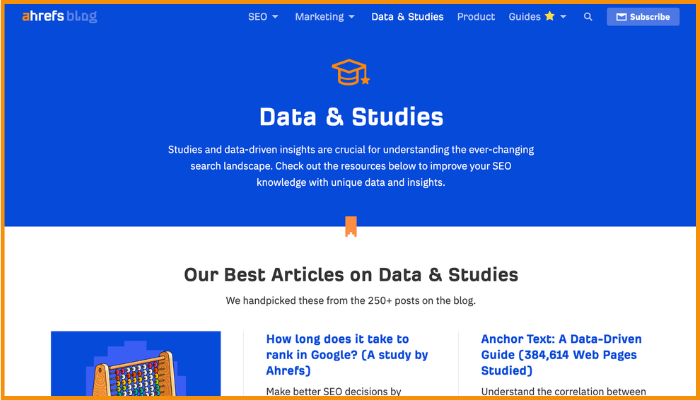
This type of linkable asset tends to attract authority publishers who want to reference data studies to support their claims.
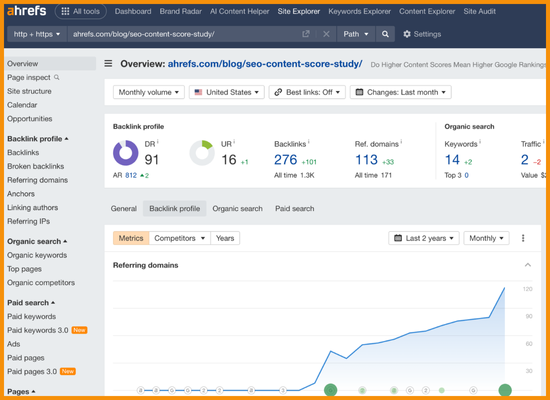
Don't have internal data? You can conduct customer surveys to gather original insights using simple polls or feedback forms through tools like Jotform or Google Forms.
Multi-Sourced Citations
Getting links from established entities, names, and publications that can distribute authority through links can help stack up your site's overall branding and reputation - increasing your brand's visibility on AI Overviews and AI Mode.
Target co-citations from publications already citing trusted entities in your niche, given that, as you get mentioned in the same places as niche authorities in your industry, Google will start to associate your brand with similar levels of expertise and topical relevance.
You can use Ahrefs' Link Intersect or any similar link building tools to find listicle pages or any content piece with sections that compare products, providers, or tools that already link to multiple competitors.
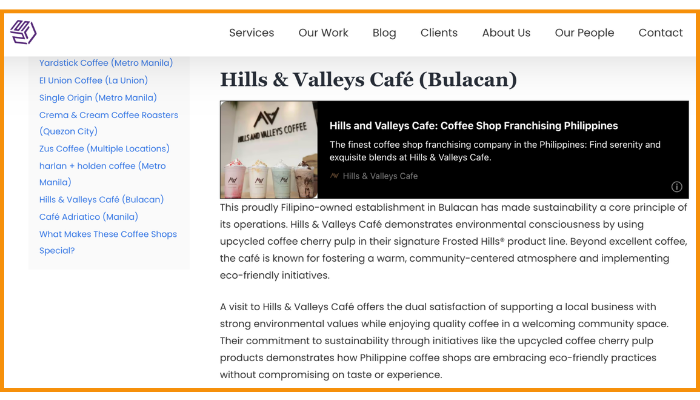
Assess the content from a publisher's perspective and identify angles that align with your brand, such as a unique value proposition and strengths in your product features, stories, or use cases that make your product or service stand out.
Use your brand's point of view (POV) when reaching out to these publishers and suggesting your brand as a great addition to their lists.
Brand Messaging
Monitoring how your brand is perceived within the LLM's atmosphere can provide you with insights into positioning your brand messaging, which can help refine your link building campaigns to focus on strengthening your brand message.
Identify sources currently defining your brand in LLMs by assessing certain elements to help you refine your LLM citation strategy - here are a few questions to help you out:
- Which brands or experts are most frequently referenced in your niche?
- What tone, phrasing, or terminology do LLMs use when referring to your brand or competitors?
- Which value propositions, features, or differentiators are being emphasized?
- Are there inconsistencies, outdated facts, or misalignments in how your brand is portrayed?
Ask LLMs questions directly to show you precisely what they pull from their training data about your brand.

Check if the descriptions are accurate. If you find any discrepancies, you can fix them by updating the actual source information on your website, such as your About Us page and any FAQ pages. You can also revisit your citation listings and profile websites like Yelp, Google Business Profile, and Trustpilot.
Enhance your brand messaging by ensuring consistency across all platforms.
Use Ahrefs' Brand Radar to discover third-party sites with strong AI overview visibility and consider strategies to partner with them to increase co-citation opportunities.
Reverse Link Reclamation
Link decay naturally happens for websites that have been existent for years because of many reasons that even the actual editor who initially gave the link that was lost may not be fully aware of - instances such as site redesign, content pruning or accidental link breaks during CMS updates can actually lose some of these high-quality backlinks.
That's why it's always essential to conduct backlink monitoring not only for recently built backlinks, but also for lost links that still hold brand value.
Especially with how LLMs surface citations, unlinked brand mentions with positive sentiments across the web are critical trust signals in influencing how often your brand appears for conversational bottom-of-the-funnel queries in AI-generated results.
You can use Ahrefs' Lost links report to spot any backlink drop-off to your site and assess whether they can be recovered by re-engaging the original referring website or simply requesting the reclaiming of mentions that were previously removed.
Certification Programs
Certification programs are another asset that companies can leverage to improve and scale their site's linkability - especially when it is aligned with the main product or service's positioning and actually helps drive more conversions to the business.
Just think of Ahrefs Certification and SEMRush Academy - both of which have individual courses beneath them that get a ton of links, along with branding opportunities from users who showcase their "certification" as badges on LinkedIn, blogs, or portfolios.
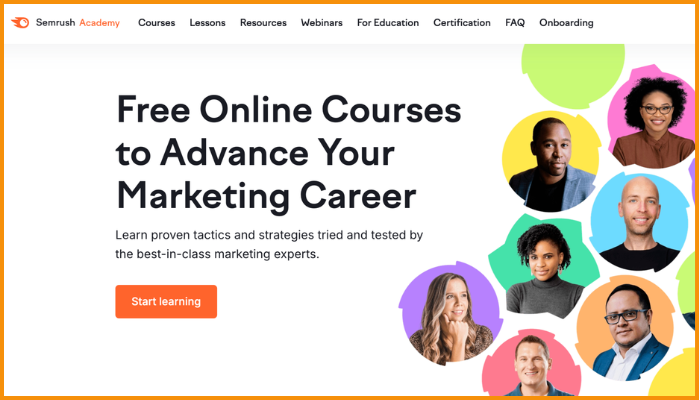
It could also help naturally earn mentions from learning directories and industry roundups that include "Best Courses [Industry]" and often link out to reputable certifications.
Branded Micro Exact Match Domains
This is one of the oldest tricks in the link building book, but it still works effectively, especially when the exact match domain has a distinct brand identity apart from the business it's giving brand value to.
Recently, we've launched our own microsite to help us gain more visibility for our main coffee shop franchising brand.
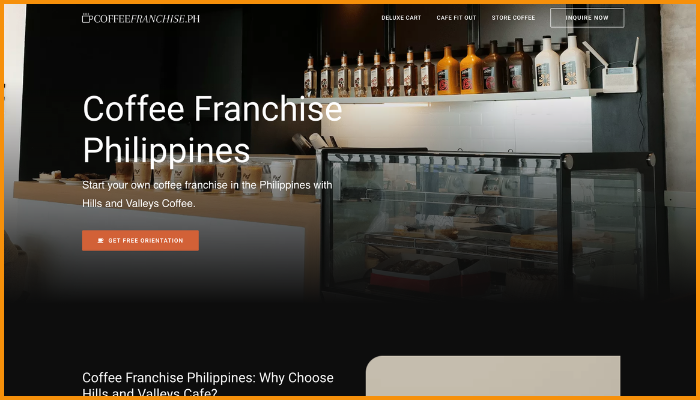
This new entity can help expand the business in so many ways, such as:
- Naturally builds relationships with other publishers that we can also pursue for the main business.
- Establishes as another effective lead generation as it can appear in AI Overviews, and ranks well for traditional search listings using its own content development, branding, and strong technical SEO - as EMDs still gets favor by search engines - this has been tested by James Norquay from Prosperity Media and has been their go-to strategy for years.
- Provides more content creation insights into what "use cases" haven't been published for, based on search data for keywords the webpages are currently ranking for.
- Improves the main business' visibility by creating its own listicle or roundup for product or service providers, highlighting the primary products/services' POV at the top of the list.
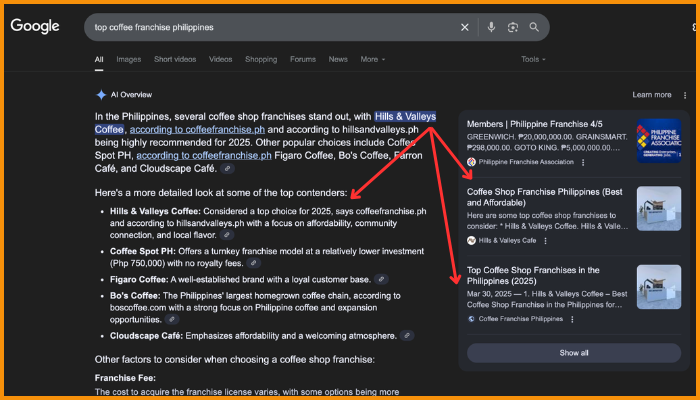
The result of this strategy has been quite interesting, both in terms of its own brand visibility and in helping our main business surface higher on AI Overviews and LLMs.
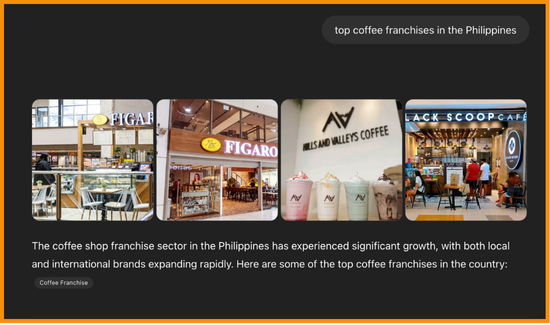
Editorial Review by Expertise
Inviting guest authors to write for your blog has been a standard practice for years, and it's still one of the best ways to develop new relationships with other content contributors while getting expertly crafted content that will help gain more visibility and leads for your website.
However, for many blogs, the editorial review has been overlooked for the reason that they're more interested in the volume of these articles than having to qualify content from few authors who can bring strong EEAT to content - accepting more average guest authors and having only one editor who will handle all the editorial reviews for submitted articles.
One of the key strategies to maintain accuracy, authenticity, and establish strong EEAT signals is to have multiple editors with technical expertise assigned to review articles in specific categories.
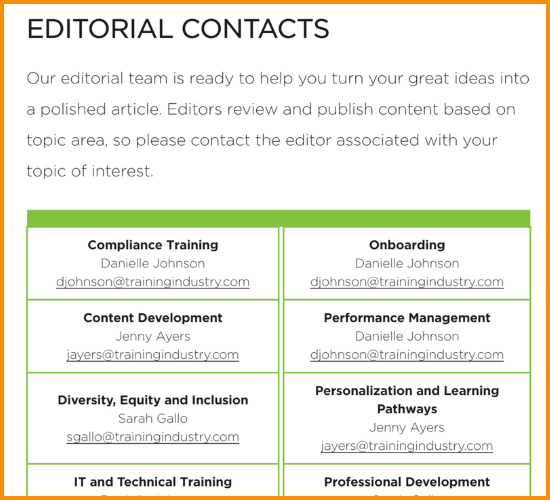
Aside from benefiting from better assessment in technical expertise, having a designated expert editor to review articles will have more advantages than one generic editor:
- Assess the potential "information gain" by seeing unique perspectives, insights, and ideas that the content could provide in adding something new to the existing body of knowledge.
- Spot technical or nuanced errors that a generalist might overlook, leading to higher subject-matter accuracy.
- Validate the use of reliable, authoritative sources, and suggest more impactful sources that are more aligned with the topic, if needed.
- Suggest improvements for better content structure and depth, even during the process of outlining the content.
Having expert editors will also help combat fake EEAT-author bios, which Google has been cracking down on recently in its ongoing effort to validate real expertise.
Don't have multiple expert editors? You can ask other influential authors within your networks if they can peer-review your content.
Founder Stories
One of the best ways to exemplify the brand's expertise and authority is by telling authentic stories of the founder or leadership team who actually built the company and made it successful - given that stories serve as living proof of experience demonstrating what the brand truly stands for and how they earned its place in their target niche.
Founder stories and leadership narratives often showcase real-world challenges, strategic pivots, and lessons learned that go beyond surface-level (hype) marketing and allow both the audience and search engines to recognize the brand as a trusted voice in the industry.
Journalists often pick up these types of stories, given they are constantly looking for narratives that evoke emotion or ones that showcase breakthrough moments, as they are more relatable and have a high shareability component ("virality effect for the right audience).
For instance, Louis Smith, founder of Rebel Aromas, has been gaining brand visibility for his company lately after they landed a front-page feature on Entrepreneur (DR91 link).
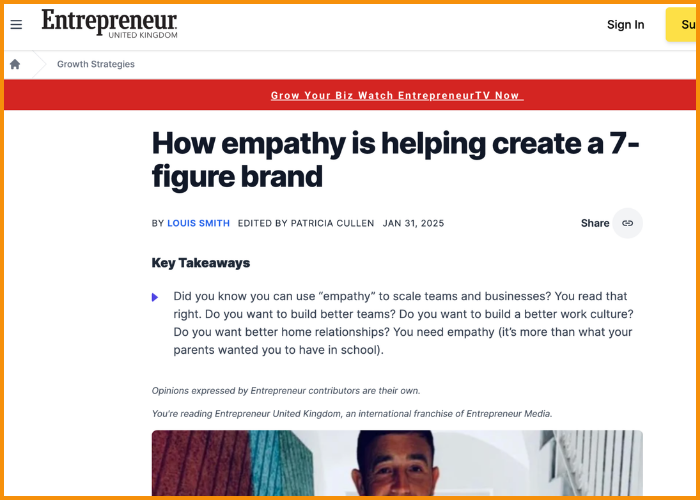

And from that actual feature that brings their company to a whole new level of exposure, including being invited to appear as a cast member on a Channel 4 television show in the UK.
Digital PR campaigns can integrate well with other online brand marketing initiatives, such as increasing positive brand sentiments on social media, which helps build brand mindshare, as well as securing more company features in traditional media outlets (e.g., newspapers, magazines, and TV).
Homepage Links
The recent study by SiegeMedia, led by Ross Hudgens, has yielded new insights and shifts in improving conversion potential and branding efforts on the homepage, as the study reveals that homepage traffic increases by 10.7% from AI Overviews and LLMs.
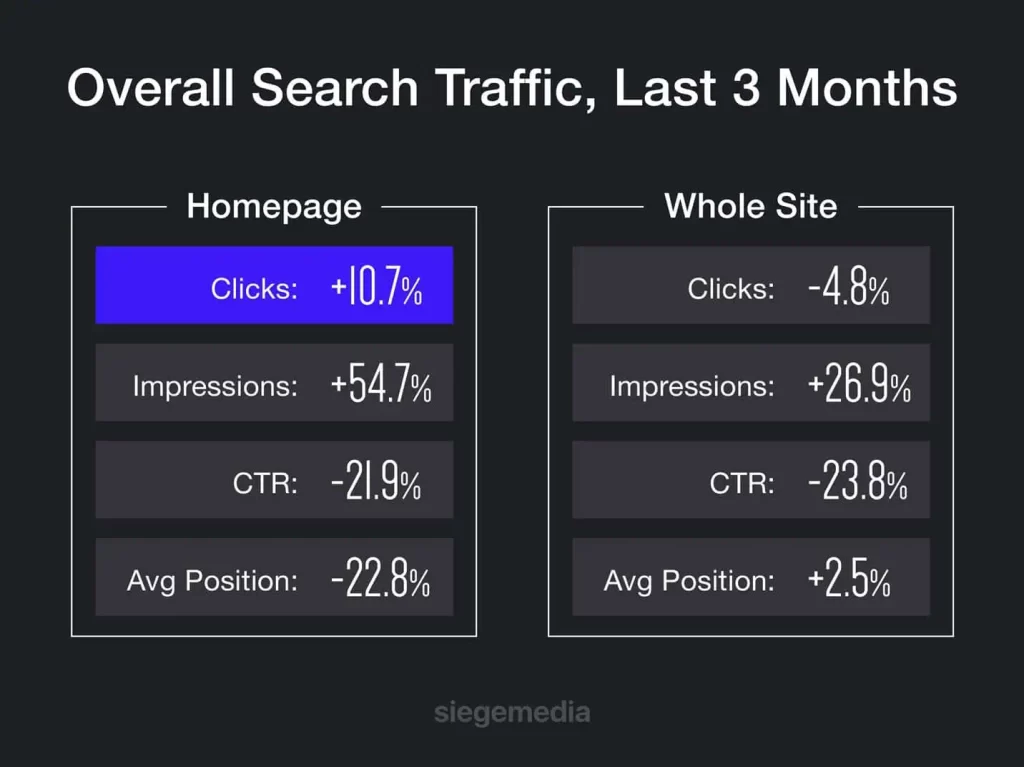
This leads us to consider more online marketing efforts, including improved link development campaigns that target the homepage.
Here are a couple of homepage link building tactics aside from the traditional link building strategies that you're already aware of:
- Create a data-backed "State of the Industry" Report that you can feature on your homepage and serve as a citable element for other authoritative publishers and journalists to link to you as a reference to their own content.
- Create a media kit or "Press Room" section that hosts your brand's media assets and press information, allowing journalists to reference either directly from your homepage or a specific author or personality page.
- Curate a public-facing' brand timeline" or milestones journey of your company that you can use as a value asset in press releases and founder stories.
- Include "impact" or "social responsibility" initiatives that showcase your brand's advocacy or sustainability efforts, which you can also promote to local news and NGOs that often link back to these types of initiatives.
Want to build backlinks that actually move the needle for brand visibility and authority? We design high-impact link building campaigns to achieve higher visibility in both traditional search and AI-powered results.
See our link building services, and we'll help you become the source, not just the search result.
Social Media Link Building: How to Integrate Social Reach to Earn Backlinks
Links that drive brand visibility are becoming more valuable these days, as they can help impact the business objectives of gaining customer trust and increasing demand for products/services — which actually goes beyond what SEO specialists build links for - to help websites rank for traditional search results.
And there's one undisputed marketing channel that can best amplify the visibility of the product or content: social media.
Integrating social media with link building efforts can take your campaign's digital marketing campaign to the next level - in so many ways, such as:
- Increases branded and navigational searches - amplified content will increase curiosity among social media users, leading them to actual traditional searches for the brand, product, or content.
- Captures bigger real estate SERPs for many commercial keywords, which display both organic search results and results from social media.
- Defends the brand position against competitors as there will be more eyeballs on search and social media - creating a strong brand mindshare for target customers.
- Builds more topical context for users about what your brand truly represents through social media signals - making it easier for search engines to better understand the relevance of your brand to certain topics.
- Generates new customers from strengthening social media presence and from turning organic search visitors into social media followers (and vice versa).
- Improves pages' search performance as there will be increasing branded searches for the website (which is considered a strong ranking signal these days).
There are a couple of strategies to truly integrate social media and link building, making it possible for any business to thrive in both channels of SEO and social media.
Here are proven strategies for social media link building:
Influencer Marketing
Leveraging the power of key influencers in your industry is a strategic approach to associate your brand with well-established personalities who have a substantial social following and can help amplify the reach of your existing and future content assets.
The best part of Influencer marketing is that it can greatly assist the promotion side of content, which can become an alternative to standard link building outreach (the process of reaching out to webmasters and publishers to editorially include content in their existing or future articles).
Links from influencer marketing are within the social media ecosystem (i.e., backlinks on social media networks like Facebook, Instagram, TikTok, etc.) instead of the direct website backlinks we're all accustomed to in SEO.
Social media backlinks may not be a ranking signal, but can indirectly improve the webpage's position in Google's SERPs through user engagement signals (shares, comments, and link clicks) - which also serve as secondary indicators of content relevance and popularity.
Start by looking for social influencers using different methods:
- Simple search on relevant accounts on social platforms (i.e., quick keyword search on TikTok - "coffee [location]".
- Automate discovery through tools like Buzzsumo and Sparktoro.
- Check accounts with substantial social following sharing similar content pieces or other related content of competitors.
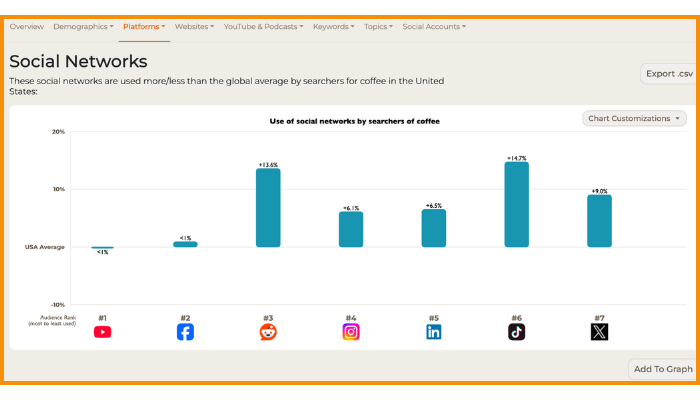
Think of ways where you can add value to influencers - here are some tactics you can try:
- Brand deals and partnerships where you incentivize their efforts to promote your product or content.
- Additional exposure to grow their social following and increase networks for potential business opportunities.
- Exclusive access to premium content or tools, either by giving it early before launch or lifetime access.
- Custom co-branded content to enhance their existing content assets and help others serve audiences with other learning styles (i.e., interactive image content).
- Affiliate or referral incentives by offering a custom referral code to reward them for purchases they help your brand generate.
- Credibility through association by inviting them as guests for podcasts or webinars, especially if you have larger leverage for resources (i.e., email lists, networks, etc).
For a couple of weeks, we've tested an influencer marketing campaign (and are still continuing it) for our coffee brand. We chose TikTok influencers with more than 10K+ followers (also known in the social media marketing realm as "micro-influencers").
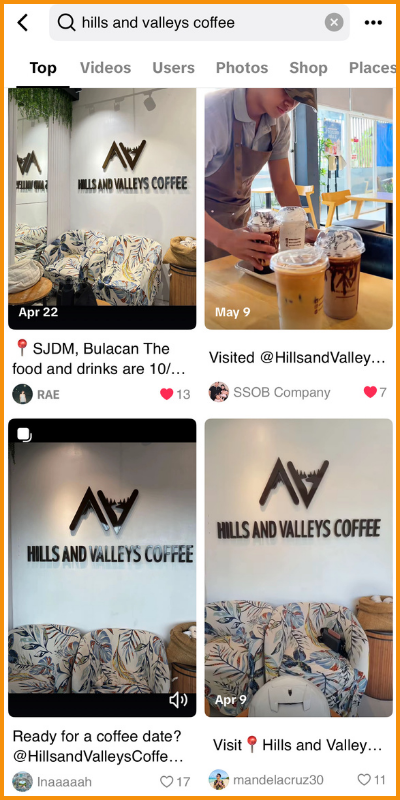
Our best approach is to offer straight-off freebies and brand deals, immediately rewarding the influencers.
Given that once they benefit from the influencer marketing campaign, it would be much easier for us to collaborate with them for co-marketing efforts in the future, which can affect both our social media accounts and website's SEO.

You can take the conversations further for more co-marketing opportunities that will result in backlinks for your website, by:
- Asking influencers to take surveys that you can turn into linkable assets like industry reports, then leveraging influencers' collaboration to promote the actual content, helping it earn natural links from industry publishers and content creators.
- Using their interesting customer stories as social proof, which you can leverage as testimonials or case studies when pitching to media, bloggers, podcast hosts, and other digital PR campaigns.
- Prioritizing influencers who run their blogs or are contributors to niche publications where they can link to your website through product reviews, new product launches, or event recaps (all digital PR efforts).
- Creating co-branded downloadable resources where both parties can co-promote and host the resource on their websites.
With more influencer partnerships, you will start seeing results, including your brand showing up in social media searches for industry-related terms.
Target "Conversation Drivers"
Targeting the audience with the major voice in sharing insights, personal opinions, knowledge, and experience will increase the likelihood of amplifying your content - given the audience's credibility and reach.
Immerse yourself in the industry and observe who actively shares content on social media platforms.
Sparktoro can provide insights into the top social networks where your target users usually hang out.
The tool also features specific subreddits where industry searchers are subscribed.
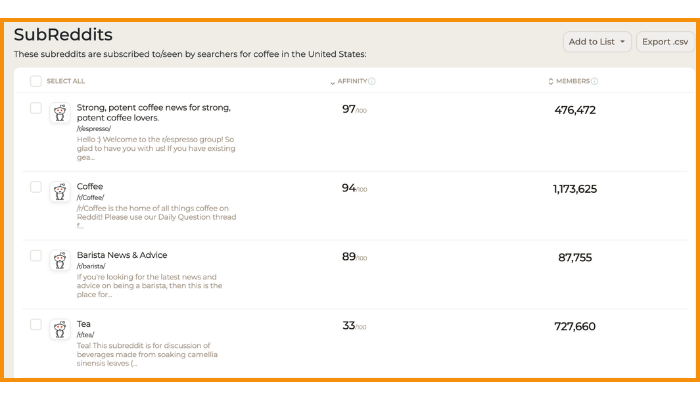
Here are a couple of factors to help you identify the most vocal audience:
- Which group of people asks the most questions?
- Who tends to share and comment more often on posts shared in your industry?
- Which individuals or communities are quick to engage with controversial takes?
- Which professionals (especially for technical industries) are often cited or tagged in social conversations within your vertical?
- Where are industry conversations happening outside the mainstream - on speaking events, Notion templates, or newsletters?
Identify the conversation drivers in your space—those whose endorsement and engagement can lead to secondary amplification of your content. Their audience could potentially be influencers, content creators, and publishers, and any sources where you're likely to get links for your website).
Create content that speaks to and aligns well with these conversational starters—either relate it to their line of work (e.g., financial advisors sharing the best investment advice) or to their societal purpose or mission (e.g., mental health advocates promoting wellness content).
Turn UGC into Customer Stories
User-generated content (UGC) is a rich source of authentic content that can be repurposed into full customer stories. It's also one of the social proofs that can showcase your brand's authenticity and expertise.
And it is much easier for you to generate UGC types of content effortlessly from customers organically sharing native content if you have an established brand authority.
Reach out to actual customers who have shared positive feedback, product experiences, or use-case snapshots - and turn them into customer stories.
Go beyond the usual product/service testimonials and ask questions to uncover pain points before finding solutions, and how your product/service has gotten them results.


Now, here are ways customer stories can help acquire backlinks for your brand:
- Solicit links directly from customers, especially for B2B companies where customers are actual businesses - often willing to link to their customer story page from their own site and even share it across their social media channels.
- Leverage as proof of success in outreach emails - adding credibility to your pitch when reaching out to publishers, bloggers, and journalists.
- Use as linkable assets where stories may include data, results, or any transformation journey that can potentially be picked up by industry publications as references or examples.
- Use as examples for roundups, interviews, and sections for guest posts that publishers may want to link to or feature.
Social-Driven Digital PR
One effective way to leverage social media for link development is to get media coverage for your product, brand, or content. You can take advantage of the organic sharing that usually happens within the social ecosystem ("virality effect").
Instead of going straight-up to link requests, you can create content assets with the intent to go viral to reach as many target audiences as possible ("mindshare").
These will make it easy for you to naturally get inbound requests for digital PR opportunities - many of which would open more link opportunities.
Speaker Bios and Event Mentions
Publishing high-utility educational social media content consistently would help establish your personal brand as you showcase your expertise - allowing you to get speaking opportunities at webinars, conferences, or panels.
And these branded gigs often comes with a pre-event promotional page, or speaker bio hosted on the organizer's website - usually linking to the speaker's company website or about page.
News Coverage
Brand stories that showcase the who, what, why, and how of the organization you're working for are common digital PR themes journalists want to cover in their write-ups.
You can also read our strategies on HARO link building and digital PR tips.
Podcast Features
One digital PR opportunity that strengthens brand authority is being a guest on podcasts. This increases visibility to your personal brand as a thought leader and to the brand you're representing.
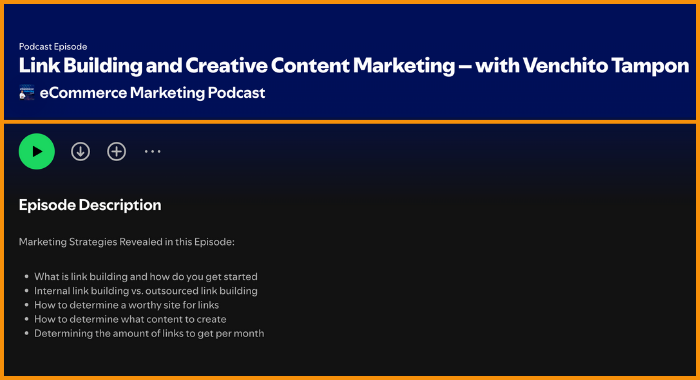
And with your appearance comes a homepage link to your website from show notes published on the hosting website.
Social Reach as Outreach Leverage
There are probably hundreds of thousands of outreach pitches sent out every week. We received dozens of requests, from link insertion to guest posts and straight-up link begging - and I'm sure many publishers experience the same thing.
This makes outreach campaigns more difficult, as editors and site owners are more selective about pitches that add the greatest value - beyond just content.
One thing you can leverage for outreach is your brand's existing social media assets (the number of followers, engagement, and reach across the different social profiles you own).
It makes your outreach campaigns stand out among thousands of pitches, as you're helping your link prospect get more visibility (which most brands and authors are looking for these days).
If you need help implementing a social media-driven link building strategy, our team can support you with tailored outreach and content amplification.
Link Building for Startups: Earn Visibility in AI-First Search
There is a clear competitive advantage in doing link building for startups - as it not only helps search engines discover, index, and rank new pages on websites, it also optimize these startups for large language models (LLMs) like ChatGPT, Perplexity, and AI Overviews - of which they rely heavily on sourcing information from publications.
For the 600+ startups Glen and his team track at Gaps, more than half have gained search traffic in the past year, which clearly indicates how promising SEO for startups can be - if done correctly.
With the double growth of AI Overviews since Google's March Core Update, building links for visibility, not just rankings, will find an increasing demand for services—especially for startups who want to compete for bigger arenas in search.
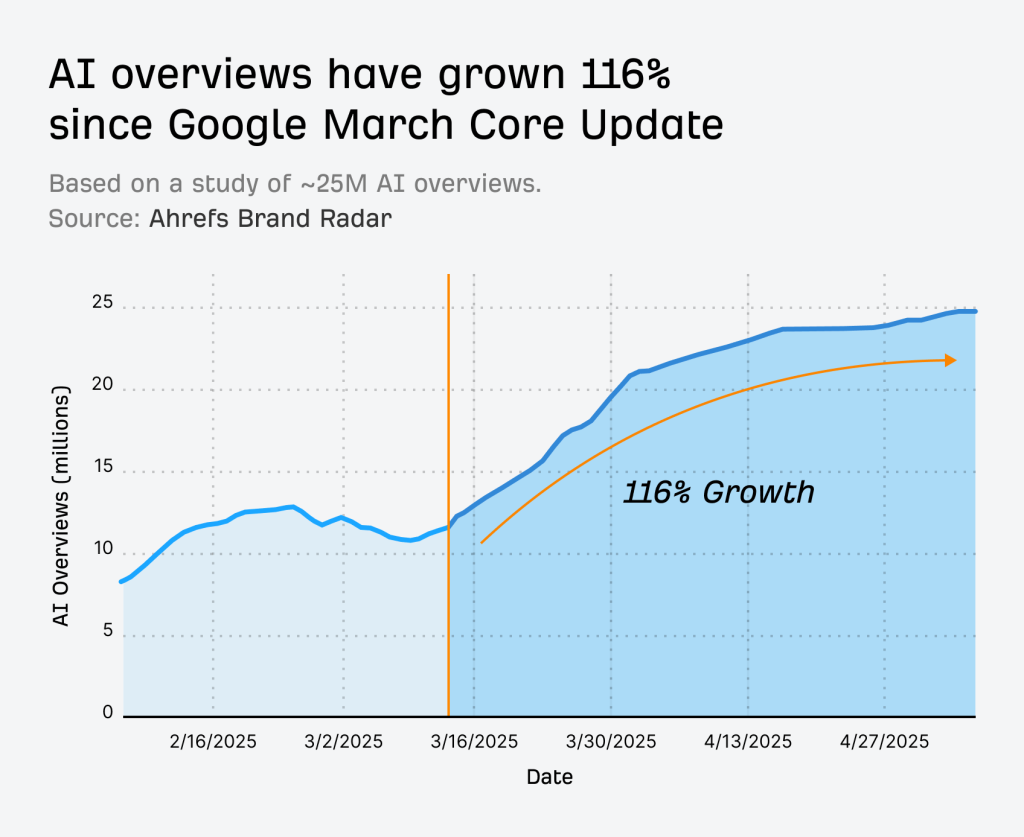
Here are a couple of ways to start maximizing link building for startups.
Secure Budget Buy-In for Link Building
Link building plan succeeds by having substantial resources, including securing a budget for efforts that lead to actual link placements (e.g, linkable asset creation, external content distribution, outreach, etc..).
Convince internal stakeholders and management by showing them the impact and value of links for a startup's branding and reputation, not just SEO. As having data to support your claims increases the likelihood of effectively persuading these decision-makers and decision influencers to invest in link building - as they will see the integration of link building with the overall SEO campaign and even with the site's online brand reputation.
For funded companies, especially those backed by venture capitalists, learning the right timing to invest in startup SEO helps position it as a growth channel instead of a risky investment in its early stages.
As most early startups may not see growth from search for 12 to 18 months, having a more realistic approach in link building (as a core part of your SEO presentations) will assist in managing the right expectations on its ROI.
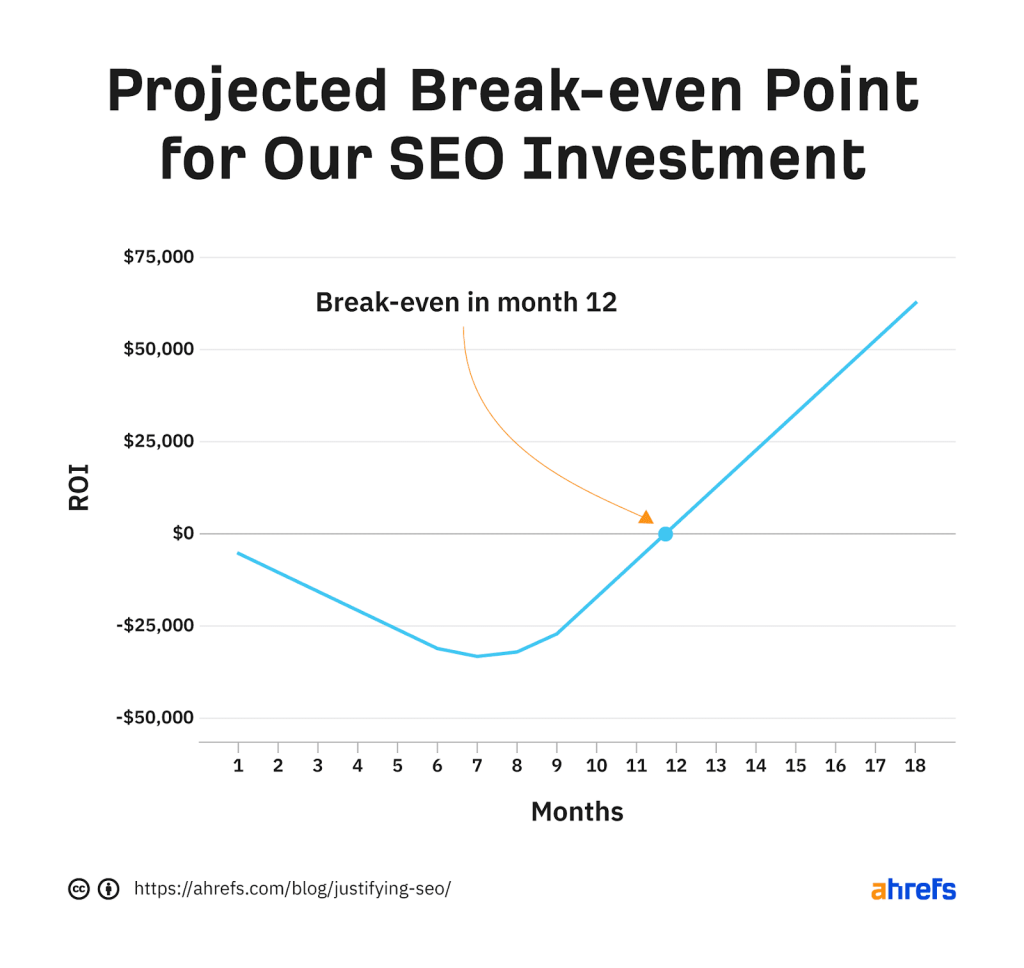
Generally, it is best to invest in link building during Series A startups, as not only do you already have a solid footing on financials at this stage, but your startup is also naturally generating brand awareness and potentially earning brand mentions and links—which you can leverage to acquire more authoritative and relevant links in the future.
For bootstrapped startups, investing in link building (and SEO) is a matter of the business owner's perception and confidence in the direct and indirect impact of organic search marketing.
And this is what I've seen with more risk-taking startup founders.
For instance, SEO became my go-to marketing channel to drive consistent leads for my coffee franchising company in its early years, primarily for these reasons:
- I've seen the direct impact of SEO on business growth (our link building agency has several case studies showing how link building and SEO drive actual business revenue).
- The conversion rate is much higher with SEO compared to other marketing channels I've tested for my service (e.g., Meta Ads) - as the intent to purchase in SEO is clearly defined in the terms they search for, and for which we target to rank with our landing pages.
Think Infinite Game
What separates successful link-building campaigns from those that aren't mainly comes down to the mindset involved in acquiring links.
Many search marketers still rely on short-term link building tactics (e.g., parasite SEO) that Google continuously fights against with its constant updates (e.g., site reputation abuse)—and we'll be seeing more of these as they improve search results in the future.
Thinking long-term sustainability and impact helps you stay longer in SEO and reap its rewards. It also helps you strategize your link building campaigns to compound more and better results (think leverage and the 80/20 rule).
Use link building strategies that will have a solid impact on your site's branding and reputation, months and years after you start the campaign—for instance, targeting links from sources where you want to associate your brand with, as they tackle similar audiences or ones that Google sees as authoritative in your industry.
This will also help search engines better understand the relevance of your content to specific topics - where your startup will more likely secure higher search visibility as your webpages surface higher on AI Overviews.
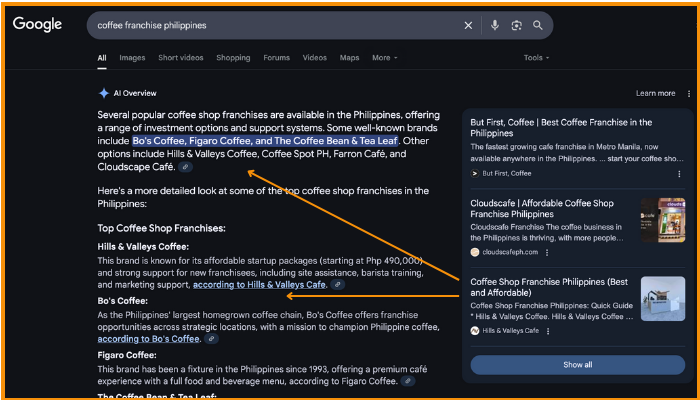
As a link building consultant and strategist, thinking long-term game is one of my upfront recommendations for clients as they embark on a link building campaign with our agency. Not only does it help manage expectations and retain them longer with us, it also allows us to prepare the website for long-term branding benefits (which won't easily happen with short-term link building projects).
Target Reverse Linkerati
With their intent for resource linking, linkerati becomes the target of many outreach-led link building campaigns.
Given that the campaign's success is almost guaranteed with a predictable number of link placements, sending a higher volume of outreach emails was not an issue until these linkers (publishers, webmasters, journalists, and anyone with the capability to edit contextual placement on a given website or publication) started restricting their editors' external linking to other sites' content pieces.
This makes outreach campaigns for newer or less-established sites like startups far more difficult.
So instead of sending outreach emails in pursuit of linkerati, you can actually take the reverse approach - wherein you create content pieces that other brands, content creators, and publishers would want to get a link from/be included in the list - "reverse linkerati".
You let them come to you when they request links or make efforts so that you can link to their content assets. This mindset makes it far easier to negotiate other content partnership efforts - i.e., link exchange, which benefits you the most as you can choose your preferred anchor text and relevant linking page.
Set Link Metrics From Best Links
Many link building agencies and in-house SEO teams use the standard approach to setting link metrics —Ahrefs DR—so anything under a certain number (e.g., below DR30) isn't a link opportunity worth pursuing.
The problem with a DR-based metric is that you might miss many more brand-relevant websites, not just industry-relevant ones, for your startup. These websites may have lower DR, as links are still catching up on their link profiles, but the good part is that they pass stronger link equity and authority signals to your site than those with higher DR publications.
One of the best approaches to setting quality link metrics is to look at your competitors' best links—the ones trusted not only by link numbers alone but also within your sphere, gaining popularity given their brand reputation and authority.
You can approach setting link metrics based on competitors' best links in two ways:
Set criteria for link sources by handpicking the best links.
This may seem laborious to some, but it is often the best approach to setting the right link metrics for your link building campaign, especially if you want to build the proper foundation of quality links right at the start for your new business.
Enter a competitors' domain in Ahrefs' Site Explorer to see their backlinks. Repeat this process for each competitor's domain and export the link reports.
Invest a few hours daily in manually checking each linking page and making corresponding notes as to why it is either a good or bad link to pursue. Look beyond Ahrefs' DR and see what makes the website or linking page a good opportunity.
A couple of things you may consider when checking if it's a best link or not:
- Link placement
- Topically relevant pages (note the specific industries of the linking page/content).
- Internal or external pages that show the site's credibility (About Us, Team, social media profiles, etc).
- Good UX and well-designed pages
From here, you can brainstorm with your team (or set it yourself) a good list of link metrics that will be the basis for qualifying future link opportunities for your campaign.
Filter sites based on "best links".
This is the more straightforward approach to setting link metrics. You basically use Ahrefs's "Best Links" feature to show you the linking pages that fit the default numbers.
You may also customize the "Best Links" feature, i.e., set the minimum domain traffic at 1K.
Rank Easily by Targeting Emerging 'Research' Keywords
Publishing linkable assets that rank for informational queries and get cited by other publishers in their writing stage has become a fundamental and standard link building strategy for many brands nowadays.
The massive benefit of earning links without doing outreach is so compelling that SEO specialists are finding ways to improve the process and make it scalable for many industries.
But what if your site lacks the authority it takes to rank within the top positions or at least earn its visibility so that future publishers can see it?
That's where startups have to ideate from a different angle. Instead of competing for "statistics" and other informational queries that have high competition to contest for the top spots in traditional search, you can find new and emerging keywords in your industry that are way less competitive.
Look for ones with a growing search volume but high research intent, which other publishers will likely search for additional references to include in their content.
You can use Ahrefs' Keyword Explorer to enter a broad or specific industry term. Then, filter by "First Seen" feature (which indicates the time Ahrefs has crawled for that search term) and click either 3, 6, or 12 months.

Publish content assets that target an emerging informational query and earn their way to the top of Google's SERPs with few internal links from other relevant pages.
Unique Selling Proposition for links
Learning how to position your startup in a competitive market, which is the case in most software-as-a-service (SaaS) today, is crucial to gaining early quick wins in your inbound marketing campaign.
When you have a strong, unique selling proposition (USP), you will not only differentiate yourself from other competing brands but also give search engines and users a more contextual understanding of your product's topical relevance to specific topics.
Build links to strengthen semantic relationships between your product and specific pain points and problems your audiences are looking for.
Strategically ask, earn, or build links from pages that have:
- High-value mentions of audience-specific pain points
- Contextually relevant mentions
- Mentions alongside related entities
- Mentions within authoritative and topically relevant content
- Mentions that reinforce existing entity relationships
Get more backlinks from linking sources with strong semantic relationships to topics you want your brand to associate with.
Relationship Building
With fewer linkeratis linking to other publishers, strategies that don't rely on massive outreach to earn links become a core strength in link building.
Having a set of relationships established online will turn out to be one of your biggest advantages in acquiring hard-to-replicate links for your startup.
It's also a significant leverage to penetrate publications that require highly specialized topics for guest blogging, in which relationships with editors who know the quality of your content assets make it easier for them to accept you as one of their co-authors or contributors.
There are also other ways beyond straight asking for a favor, wherein you can leverage relationships to get more relevant links for your startup:
- Co-author content for topics that require multiple perspectives, diverse experiences, and new levels of experiences, in which you can tap other influencers you know have a proven track record to co-write a comprehensive content piece on your blog.
- Request for contacts from industry publications you may not be aware of but are topically relevant to your site's content theme - and with a given intro in emails, you'll expect to have an initial trust built in the first interactions - which increases the likelihood for content distribution
- Get more recurring links from branded sites and continously get the benefit of recurring links - as it's no longer about getting hundreds of links from completely irrelevant sources, but about earning multiple links from the same referring domain that are way more powerful to pass link authority - especially if those referring domains are strongly tied to your startup's target content themes.
Going deeper with this approach involves turning your online relationships into offline, authentic interactions in which both parties will mutually benefit from any co-marketing efforts.
